- What's My Car Worth?
- Buyer's Guide

2017 Chrysler Pacifica vs. 1984 Plymouth Voyager
Chrysler's revolutionary 1984 minivan casts a spell on the evolutionary 2017 Pacifica.
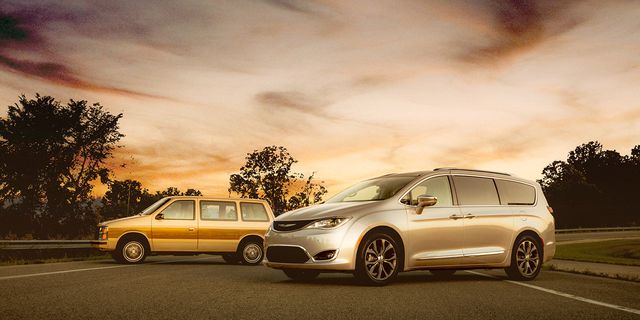
There was a Ghostbusters movie in 1984, and there’s one this year. Game of Thrones is really just Falcon Crest with more dragons and beheadings. The Libertarians didn’t stand a chance then and don’t now. Just look at these two seven-seat minivans, both driving out of Chrysler’s Windsor, Ontario, assembly plant and into the North American zeitgeist. They’re completely different vans, and yet exactly the same. It’s a mind-blowing paradox.
The old one is Magic Wagon No. 1, the actual preproduction 1984 Plymouth Voyager that Chrysler’s then CEO, Lee Iacocca, used at press unveilings, dealer meetings, and general cheerleading sessions to drum up enthusiasm for the new “T115” minivans. Stray badges shoved into a rear cubby indicate that it sometimes also appeared as a Dodge Caravan. There are about 12,000 miles on the clock, and fake wood forests the sides. A lot of corduroy cows died to upholster those seats.

The front-drive minivan was a Hail Mary pass thrown up by a team ready to be shoved out of the league. The K-car’s success had given Chrysler just enough freedom to take a big chance on reinventing family transportation. If it worked, the company would pay off its government-guaranteed loans and proceed onward to prosperity under Iacocca’s enlightened whip. If the minivan turned out to be a sales turd, well, Chrysler was going bankrupt anyhow. The company couldn’t afford the extra paper to write down a Plan B.
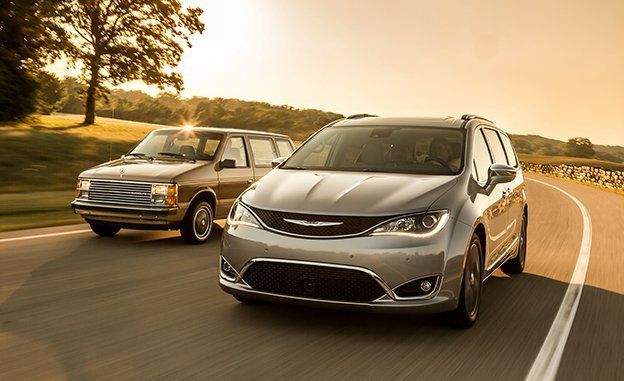
Chrysler’s timing was perfect. The minivan appeared just as baby boomers hit optimal fertility and their contempt for station wagons peaked. In contrast to the massive acreage of a Country Grand Safari Estate Cruiser, the minivan was adorably dorky; a friendly module that fit in garages, nimbly slalomed through parking lots, and had a big door on the side through which to throw toddlers. It did everything a mom-mobile had to do, but more efficiently and without the crushing wagon shame.
Change is inevitable, though, and the generation that grew up in minivans is now in its own stage of prime progeny creation. And they’ve largely stigmatized the minivan as the official shuttle between home and Blue Field No. 4 hell. So crossovers rule, even though the minivan has evolved into a vastly capable suburban multi-tool.
Is this a specious comparison? Is it polluted with nostalgia, addled with spurious allusions, and basically absurd? Damn straight. But we couldn’t find a first-gen Porsche 911 with which to do that car-magazine cliché thing, comparing the old one against the new one, so we figured this would be just as good. Plus, driving these two back to back proved oddly enlightening, even though we couldn’t take the oldster past 45 mph on a loop at Chrysler’s Chelsea, Michigan, proving grounds. Of course the new van is better. It’s also worse. So?
They grow up so fast.
The Pacifica dwarfs the original minivan. But it’s also longer than the long-wheelbase version of the full-size 1984 Dodge Ram Van. And its V-6 makes 152 more horsepower than the Ram Van’s optional V-8.
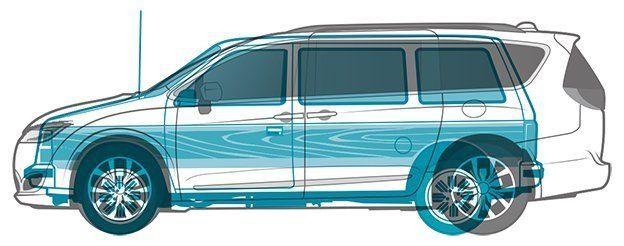
First-generation Chrysler minivans are nearly extinct. The few listed on eBay or Craigslist are basket cases selling for three figures. Ferraris are more common on the road. And virtually all the minivans that clogged the parking lots at Circuit City and Montgomery Ward were long ago recycled into Chinese rebar. So driving this pristine one, literally pulled from the Chrysler museum for C/D ’s amusement, is rare air. Maybe even, almost, this close to exciting.
Every square millimeter of the Voyager is useful, and square is how it’s designed. The pillars are straight edges, the interior surfaces flat, and the seats bolt-upright. Even almost 33 years after its debut, the sheer compact logic of this boxy design is astonishing. Heather Thomas had the curves, not Chrysler.
Inside the box, it’s all black and brown tones with squishy, soft-but-comfortable front buckets and two rows of benches all finished in a crosshatch ribbed fuzz that may be coming back into fashion. The instrumentation, switches, column-mounted shifter, and steering wheel are all bits swiped from the K-car. It not only is roomy, it feels roomy. There’s loads of glass and not even a glovebox to intrude on the front passenger’s kneeroom. A pull-out drawer under that passenger’s seat provides storage.
The front windows can be manually cranked down, but the side windows behind only swing out about an inch for ventilation. There are three ashtrays because even the kids in back should have a spot to snuff out their butts. Cupholders, a breakthrough innovation in the early ’80s, are molded into the side panels in back. There are also two mysterious molded rings atop the radio’s dash housing that suggest cupholders but are useless. Like everything in the Voyager, the single muscle-powered sliding side door operates with a light touch. But there’s no stop to hold it in the open position. That technology was in the far-off future.
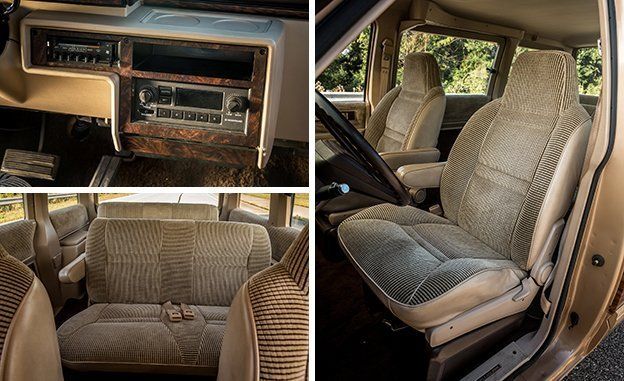
Iacocca’s Voyager has the standard 2.2-liter overhead-cam, eight-valve, four-cylinder engine lashed to a three-speed automatic transaxle. Barely gasping through a two- barrel carburetor, the 2.2 was rated at 101 horsepower. Of course it was slow—scary slow. C/D drove a Voyager powered by the optional Mitsubishi-made, 99-hp 2.6-liter four, and it slogged to 60 mph in 14.0 seconds and through the quarter-mile in 19.5 seconds at 71 mph. The 2.2 should run within a couple tenths of those performances.
But moms aren’t racers, and the headline feature was front-wheel drive, which allowed a flat floor. It was a sharp contrast to the convoluted floorpans of conventional station wagons that made accommodating many loads difficult and segregated passengers in their own holes.
It’s best to let the thin, plastic steering wheel dance along under your fingers. The hydraulic power steering isn’t quick or communicative, and the 205-section Goodyear whitewalls on 14-inch wheels (185s were standard in ’84) don’t have much to report back anyhow. The ride from the front MacPherson struts is comfortable enough while a solid axle on leaf springs keeps things jiggly in back. Plenty of rattles and tremors ripple through the structure even on seemingly smooth roads, and both were present in C/D ’s first test three decades ago, too. This is a lightly built vehicle, and it feels it, with a curb weight under 3400 pounds.

Such lightness is practically a novelty in the 21st century, and would make the Voyager compelling even if it weren’t a childhood artifact. It’s a reminder that progress often comes at some cost. The five-passenger Voyager started at $9075 in 1984, which translates to $21,053 in 2016 dollars. Throw a load of options on a seven-passenger model, and the price crested over $14,000—about $32,834 today. But roll-up windows aren’t even an option on the Pacifica.
There were tough choices to be made in 1984. For God’s sake, Knight Rider and Hardcastle and McCormick were on at the exact same time on Sunday nights. And only rich people had VCRs. But choosing to buy a Chrysler minivan over the era’s wallowing wagons? That was easy.
Compared with the raw old Voyager, the Pacifica Limited is a sensory deprivation chamber. It’s quiet, composed, easygoing, and thick in all the places where the Voyager is thin. Yeah, all the radar-based this, HDMI-fed that, and USB-whatever would be pure Cybotron Techno City fantasy to 1984 eyes and ears, but it’s the Pacifica’s structure and substance that are most impressive.
The Pacifica is 27.9 inches longer, 10.0 inches wider, and 5.4 inches taller than the original Voyager. It’s a 4557-pound behemoth that feels every inch of its size, every ounce of its weight, and every dollar of its $49,450 as-tested price. Somewhere along the evolution of Chrysler’s minivan, the mini part was assassinated.
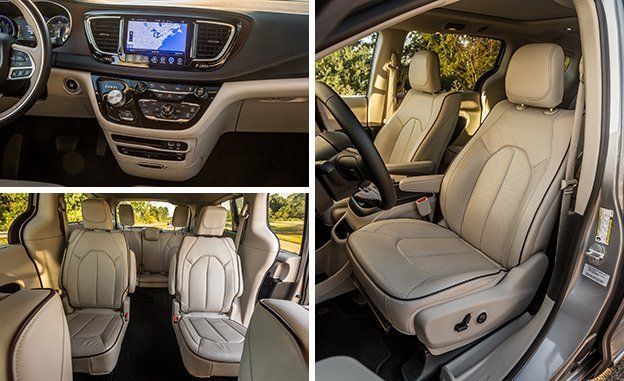
Inside this new van, Chrysler has produced a cabin that feels as if it should have wings and jet engines attached to it. But its most impressive trick is still the now-standard Stow ’n Go second-row seats that fold into wells beneath the floor. Combined with the foldaway third-row bench, flattening the floor of the Pacifica takes about as much time as it does to release one seat latch on the Voyager’s removable benches. Once you do, you’ll have 141 cubic feet in which to reenact a Star Wars light-saber fight from either A New Hope or The Force Awakens .
What road noise isn’t blocked out of the Pacifica by its impressive new steel structure is reduced by its active noise-cancellation system. Meanwhile, the weight saved by the aluminum control arms on the strut-front suspension is likely obliterated by the weight of the optional 20-inch aluminum wheels and 245/50R-20 tires. And yes, there’s a vacuum cleaner mounted amidships in the Limited to attack the family debris field. It sucks.
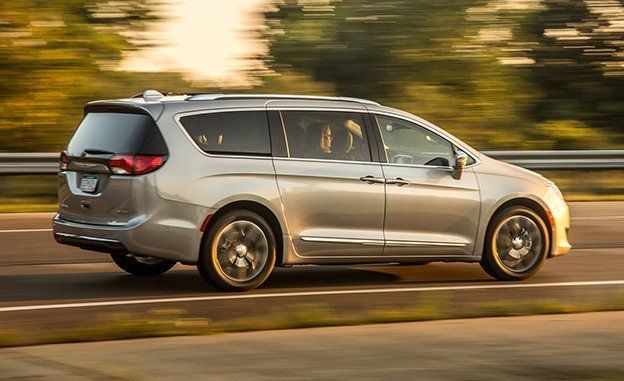
While a plug-in-hybrid Pacifica is coming soon, currently the only powertrain offered is the familiar 3.6-liter Pentastar V-6 feeding Chrysler’s now-ubiquitous nine-speed automatic transaxle. With 287 horsepower aboard, it takes the Pacifica a scant 7.3 seconds to reach 60 mph, or about half the time the Voyager needs. And it hits the quarter-mile mark nearly four seconds before the Voyager gets there. Despite all that, it betters the Voyager’s EPA-rated 17-mpg city fuel economy by 1 mpg, and its 28-mpg highway rating is a full 8 mpg better than its ancient ancestor’s, even with the 1984 figures updated to today’s more conservative ratings.
But the newer transmission is sort of slow and stupid. It takes its time deciding exactly which cog to choose from its smorgasbord of gears, and if you do something unexpected with the throttle, the transmission sometimes can’t keep up and hangs there inert. During cruises, it will randomly try various gears, apparently out of pure whimsy.
The T115 evolved into today’s Pacifica through a series of incremental steps, most of which couldn’t have been predicted 32 years ago. But as refined as this new van is, it’s missing the direct mechanical engagement of its ancestor. It needs a touch more Dukes of Hazzard and a little less Airwolf .
John Pearley Huffman has been writing about cars since 1990 and is getting okay at it. Besides Car and Driver , his work has appeared in the New York Times and more than 100 automotive publications and websites. A graduate of UC Santa Barbara, he still lives near that campus with his wife and two children. He owns a pair of Toyota Tundras and two Siberian huskies. He used to have a Nova and a Camaro.

.css-190qir1:before{background-color:#000000;color:#fff;left:0;width:50%;border:0 solid transparent;bottom:48%;height:0.125rem;content:'';position:absolute;z-index:-10;} Comparison Test .css-188buow:after{background-color:#000000;color:#fff;right:0;width:50%;border:0 solid transparent;bottom:48%;height:0.125rem;content:'';position:absolute;z-index:-10;}

Tested: Mazda CX-50 vs. VW Tiguan Split Hairs
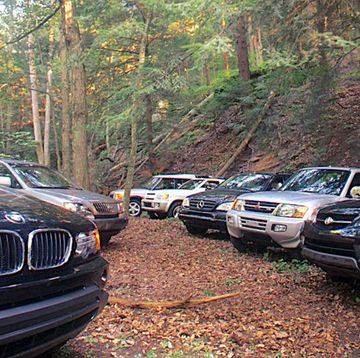
2001 Mid-Size Luxury SUV Showdown: Urban Cowpokes
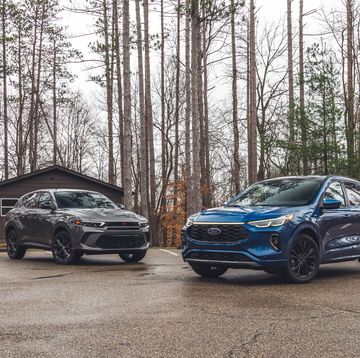
Comparison Test: Dodge Hornet vs. Ford Escape
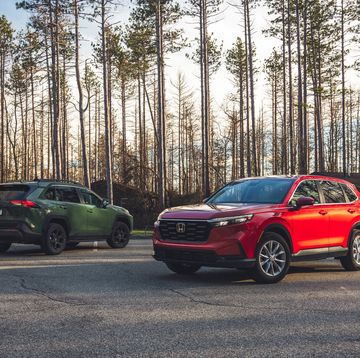
Comparison Test: Toyota RAV4 vs. Honda CR-V
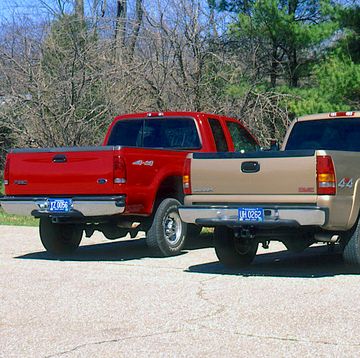
1999 Ford F-250 SuperDuty vs GMC Sierra 2500

Tested: 1999 Nissan Xterra vs. Jeep Cherokee Sport
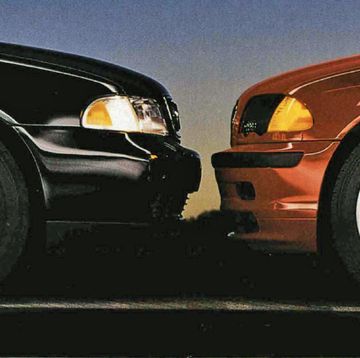
1999 BMW 328i vs 1998 Audi A4 2.8 Quattro

View Photos of the 1999 BMW 328i vs. 1998 Audi A4
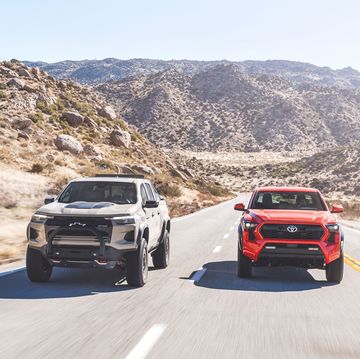
2024 Toyota Tacoma TRD vs. 2023 Chevy Colorado ZR2
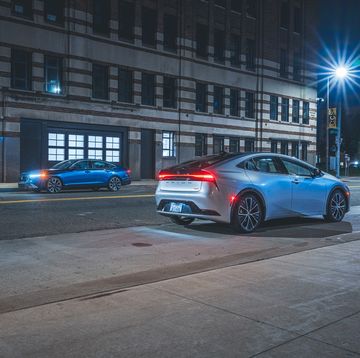
2023 Honda Accord vs. Toyota Prius: Hybrid Theory
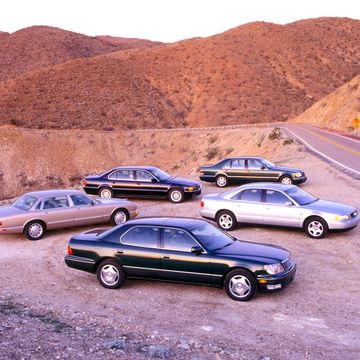
1998 Luxury Sedans Comparison Test
Creating the Plymouth, Dodge, and Chrysler Minivan: The Caravan/Voyager Development Story
by David Zatz
Launched in 1983, the 1984 Dodge Caravan and Plymouth Voyager were the result of over a decade of work. The minivans had been rejected at least once, and even after they were approved, were put on hold — in favor of the Y-body Imperial.

The idea had risen back when Chrysler had a 45% market share in full-sized vans , thanks to car-like conveniences; designers and planners both thought a smaller van could lure families from station wagons. Director of Product Planning Burton Bouwkamp wrote in a 1998 letter to Automotive News (which both parties gave us permission to reprint):
In the early and mid-1970s, our Advance Design, Advance Engineering, and Advance Product Planning offices designed first generation versions of the minivan. The program was to design a station wagon type vehicle that was not derived from another vehicle (from a passenger car sedan or a commercial van). The first generation designs were rear wheel drive because we did not have front wheel drive engines or transmissions. Product planners, designers, and engineers were enthusiastic about the mini-van (which we called a “garageable van”), but were unable to get management approval to go forward with a unique product which had a special tooling bill, not including facilities, of over $100 million. The first designs never went beyond the clay model, advanced design and seating buck stage - but the interest in the concept in the Design and Product Planning offices at Chrysler continued. The “bean counter” management didn’t approve the minivan in the early 1970s because GM and Ford didn’t have one. Top management’s contention was that, if there was a market, GM and Ford would be building one. Management was, without articulating it, deciding that our product strategy was to get 15% of market segments established by GM and Ford. As Director of Product Planning for seven years, that was a painful realization to me; that’s why I lobbied to get out of the job in 1975 when a Director level product job opened up in Europe. The second generation design, in the late 1970s, was essentially the production design, and was done by Chrysler Design Office personnel under the capable and enthusiastic direction of Hal Sperlich. By then we had front wheel drive Omni/Horizon cars under way, so the mini-van design became front wheel drive, which allowed significant improvements in the package dimensions. Hal Sperlich contributed greatly to the success of the program with his enthusiastic involvement, aesthetic input, and overall guidance of the program. When Lee saw our minivan work, he said “let’s do it.” Bill McGagh (Assistant Treasurer) told him that we didn’t have the money to do a minivan; Lee told him to “get the blankety-blank money,” then replaced Bill with a new Treasurer. Lee Iacocca gets credit for his support and the “guts” decision to go ahead with a now even-more-expensive FWD product at a time when the Corporation was having trouble paying its bills and maintaining product competitiveness in existing market segments. Hal Sperlich and Lee Iacocca should get credit for the final (front wheel drive) design execution and the decision to go ahead with production of the mini-van program at Chrysler - but not the idea.
Another Chrysler alumnus wrote that the minivan idea may have dated back into the 1950s, with the Volkswagen Omnibus — “though it had vicious handling in its early form and barely enough power to reach 70 mph, it demonstrated how a smaller van could reach the hearts of families.” There were many smaller vans sold in other nations, as well, including passenger versions of Japanese small delivery wagons.
“In the early 1970s, just after the ‘shocks,’ some engineers in the Advance Design Group of Dodge Truck Engineering (DTE) began to look at trucks and vans with higher fuel economy, smaller size, and lower weight. Because DTE was small and closely knit, the group soon expanded to include Gordon Cherry (marketing), Glen Gardner (product planning), and stylists.” Top management was, he agreed, concerned about the size of the investments and stealing sales from existing vans and wagons, so they never got past an advanced layout, a seating buck, and a 3/8 clay model.
Burt Bouwkamp wrote:
I was Director of Product Planning from 1968 to 1975 when we (Owen Keeler and Gene Jacoby and I) planned the mini van concept in Advance Product Planning and Advance Styling. We made a clay model and a full size seating buck. We called it a “garageable van” because we didn’t think we could sell a second car to families if the vehicle couldn’t be stored in the garage. We did market research on the concept, and it was favorable, but we could not get Lynn Townsend or John Riccardo to buy it. Their contention was that if there was a market for a vehicle like the garageable van that GM and Ford would already have one. (In fairness to them we barely had enough money to field products that were competitive with products that GM and Ford had.)
Dodge Truck product planning manager (and future LH car project leader) Glenn Gardner was given the job of turning the “Super Wagon” concept into a real vehicle. Full-size clay models and engineering studies were created by around 100 designers from a variety of Chrysler organizations.
Customers rejected aerodynamic extremes and disliked the way vans had engines in the cabin. Both Ford and Dodge came up with the same conclusions from market research: the cabin height would have to be relatively low, it would need to fit in a standard garage, and the engine needed to be in a “nose” ahead of the driver to provide crush space in a crash. Both companies also foresaw demand of up to 800,000 minivans per year — but, at Ford, Lee Iacocca and Hal Sperlich couldn’t sell the idea any more than Chrysler’s people could.

After Lee Iacocca and Hal Sperlich moved to Chrysler, they became aware of the efforts at DTE, which now included Bruce Benedict and stylists including Bob Hubbach. Engineers Leo Walsh and “Ace” Ligan developed a new set of objectives and design concepts; when planner Chuck Gunderson issued a program description on 12/16/1977, it included the familiar minivan goals...
- Fit in a standard garage
- Car-like ride, handling, noise, vibration, and harshness levels
- Low, flat floor for easy entry and loading
- Removable seats and ability to carry a 4x8 plywood sheet, flat
Front wheel drive was seen as ideal, RWD staying on as an “investigate” alternative to save money; the launch year was set for 1982, with 215,000 sales. There were practically no components at Chrysler for front wheel drive cars, though; the K cars were being developed, and while the Horizon was being developed in Europe, it was too small and there was no engine powerful yet small enough (the slant six was too large).
Chris Theodore wrote : One day I got bored and decided to design a new vehicle - by that time Hal Sperlich had come over and we were working on the K car - so I went back on the drafting board and I started drawing up a minivan. And it was funny at the time.

The union came over after a while and said they loved me, but “You can’t draft.” I said, “Can I do a tape drawing?” They said yes. So, of course, I did a tape drawing of a minivan based on K-car components.
I went back and I drew it all up on the K-car components and showed it to my boss’s boss, and he didn’t like it. The guy’s name was “Lefty” Carlstad. I showed it to the chief engineer of Dodge Truck at the time and he pulled a cigar out of his mouth and said “that’s not a truck!” and he threw me out of his office. So we went back and worked on some other stuff.
About a year later, the chief body engineer, Leo Walsh, called me up and said “Chris, remember that minivan you were doing? Yeah. Show it to me again.” Now Hal Sperlich was asking about minivans because he had been trying to get one done at Ford.
It’s not like I invented the minivan. I was just an excited young kid. I went running down there and took the tape drawing with me, showed it to him, unrolled it. He looked at it and said, “Oh, yeah, I remember that. Thanks, Chris,” and rolled it up and didn’t say anything else.
Research conducted in 1978 (clinics in Atlanta, Denver, and San Diego) showed that customers needs included parking in the garage, interior space (at least four feet high, five feet wide, and ten feet long) with a side door opening of at least 30 inches, 48 inches between wheel wells for plywood, the ability to seat three people across, a flat floor, the ability to walk from one end of the van to the other, and removable seats. Participants usually felt the concept was ugly, but demand would be high among families and retirees wanting a travel vehicle — and the demand estimate was increased to one million per year.

An engineer wrote,
The driveline was not so simple. This debate had raged for over a year. The Chrysler K-car FWD 4-cylinder 2.2 was thought to be inadequate; finally, the Mitsubishi 2.6 was identified, for optional use with automatic transmission, as an interim solution until a larger V-6 came on line. The wisdom of the FWD decision was reinforced in 1980, when the corporation confirmed its direction as, “all FWD.” Using the K-car engines and transmissions and a FWD suspension loosely based on the K-car resolved some critical investment issues. Now code-named the “T-115” (Chrysler used sequential numbers prefixed with “A” for Highland Park Central Engineering and “T” for DTE; this was the 115th project coded at Truck since the system started) , it was full speed ahead to develop detail cost and investment numbers and a final program timing schedule for approval. About this time two other accidents of fate occurred. First, as part of the effort to save cost, DTE and Highland Park Central Engineering were merged. Young but experienced managers and engineers from a culture of close cooperation with manufacturing at DTE joined the Central Engineering group; and DTE projects received the benefits of the high tech development tools at Highland Park. Second, Lee Iacocca was fired by Ford and joined Chrysler in November 1978. In late 1979, at a program review meeting, Gordon Cherry — now a top planning executive and committed to the T-115 — made the presentation to Lee. The research data was questioned, other senior staff pressured for a compact pickup truck, and no one could suggest a way to find the $700 million to fund the project. Glenn Gardner remembered that after the meeting, he and Cherry went out for a few drinks, “totally defeated.” However, Sperlich would not let it drop and “took another run at Lee” using the research. This turned the tide, and Lee, at first carefully, later enthusiastically, joined the troop of T-115 supporters. ... As the loan guarantees were processed, Lee Iacocca inserted an extra $500 million, ostensibly as part of the K-car costs. Lee never allowed anyone to request a “rollup” of minivan costs separately from the K-cars, so it appeared that the minivan was just part of the already-approved K-car program. Folding truck engineering into “Highland Park” assured car-like qualities in the minivan, since it was now to be engineered by passenger car people — not truck engineers as at GM and Ford.
The sliding door was used because people felt it was safer when dealing with children. It would not blow closed, provided access room, and was less likely to trap fingers. Two sliding doors were originally proposed, according to Burton Bouwkamp:
When I was Director of Body Engineering, I repeatedly recommended that we built the first mini-vans with an opening left rear door. I guess I made a pest of myself because Hal Sperlich (my boss) took me aside and told me privately not to bring up that proposal again. In Product Planning we always envisioned the T-115 to be a “people mover” with four side doors and a hatch. (The right side only sliding door on the 1984 model was to be sure that the mini-van appealed to commercial customers.) Hal didn’t want to build the vans with both three and four door versions because of the increased manufacturing complexity; and it would have increased the tooling bill. Money was a problem at that time. The Finance Office (Bill McGagh) told Lee Iacocca that we couldn’t afford the mini-van [at all]. Lee told Bill to "find the G--- D--- money - that’s your job!" [The whole project was to cost $700 million.]

... the K-Body and T-115 minivan were different platforms. They did have a common East-West FWD powertrain, but their body structures were different. To have common platforms the front wheel position, base of windshield — cowl height — and driver’s “H” point must be identical.
Later, Burt Boukwamp elaborated:
I was Director of Body Engineering from 1979 to 1983, when we designed the production version of the T-115. During this time I tried to get Hal to approve four swinging passenger doors. I said that we always planned on the van being a four door passenger vehicle. Hal said that we were going to do a right hand only sliding door to appeal to the commercial market. (Commercial vans have built in racks/shelves on the left side so they don’t want a left side rear door.) I said, “Then let’s make the left rear door optional.” Hal said “We don’t have the money, and don’t bring that proposal up again!” So the T-115 had three side doors and “soccer moms” liked the vehicle! We told dealers and customers that it had only a right hand door so passengers would have to get out curb-side. Years later we added a left rear door – but we never did swinging doors.
One team member wrote, “Door configuration questions were quickly solved by what some remember as a rather arbitrary decision by Sperlich to configure the doors as two conventional front, one sliding right side, and a lift-gate rear.”
Most people wanted bucket front seats. Burt Bouwkamp wrote, “One of Owen Keeler’s objectives was that the design should facilitate passengers changing seating positions while the vehicle was in motion. When you consider the safety implications, this was not a realistic objective, and we did not merchandize this feature.”
The rear opening preference was divided between a one-piece lift-gate (preferred by sedan owners) and a station-wagon type two-part gate (preferred by station wagon owners).
The windows were mounted relatively flush, cutting aerodynamic drag and associated noise. Burton Bouwkamp wrote that “when Hal Sperlich (my boss) saw the latest Toyota Tiger (I think?) and Nissan Leopard cars at the Tokyo Auto Show... he decided to move the glass planes outboard on the mini-van by 3/8" to make the side glass more flush with exterior door and quarter sheet metal. That involved a complete redesign of glass drop mechanism and door/window seals as well as exterior sheet metal changes.”
A minivan engineer added, “Hal Spurlich directed that the minivan side glass be restyled to be flush with the outside sheet metal. This change, which caused considerable anguish in body engineering, ultimately created a much more modern appearing and longer lasting design.”
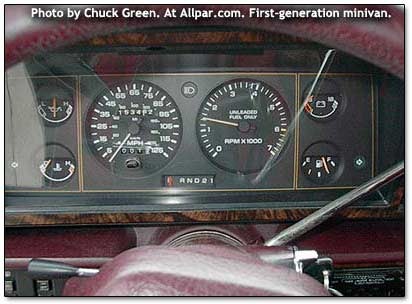
Ironically, Chrysler was also involved in a minivan project in Europe, with supplier/specialty automaker Matra ; but Chrysler sold its European holdings to Renault, which released the final product as the highly successful Renault Espace.
Burton Bouwkamp added, “I resolved not to go into production with a less than fully developed product, regardless of pressure. At times, I was unpopular when I told Hal Sperlich (President in 1982-3) that we weren’t ready for production. Hal trusted me and supported me even when I did not tell him what he wanted to hear. He then had a bigger problem than I did because he had to tell Lee (Iaccoca).”
Voyager and Caravan shared a surprising number of parts with the Reliant, including interior trim pieces, the instrument panel, and engines. Still, enthusiast magazines at the time talked about how upscale the controls and trim were.
A minivan engineer wrote:
Who invented the minivan? The names of the perceptive engineers in DTE Advance Engineering who identified the need in 1970 are now lost. There were other parents; Hal Sperlich, who came to Chrysler in 1977 and enthusiastically resurrected the project, improved the design, and sold it to Lee Iacocca; Lee Iacocca himself, who made the gutsy decision to proceed and kept the vehicle in the plan over every objection; and Glen Gardner and Gordon Cherry who refused to be defeated as they lead the early project team. All of the engineers, designers, and others at Chrysler who took on a labor of love to create a new type of vehicle — despite the resource shortages, restrictions, schedule changes and time pressure — and the workers at the Windsor assembly plant who built the best quality vehicle Chrysler had yet produced.
The 1984 Chrysler minivans hit the market
Applauded by automotive magazines, the “T-115” minivans became a major success from their debut, with 209,895 sold in 1984. St. Louis soon joined Windsor in devoting three shifts to minivan production.
Major changes through the years included the 1987 introduction of a Mitsubishi V-6 engine, which coincided with fuel injection on the 2.2; a short-lived 2.5 turbo option; extended-wheelbase versions (the “Grands,”) and the claimed “first luxury minivan,” the original Town & Country. The longer wheelbase vans were fourteen inches longer, and soon accounted for half of minivan sales.
The 2.5 liter engine eventually replaced the troublesome Mitsubishi 2.6; it was basically a 2.2 with a longer stroke and balance shafts, which would be the standard engine until 2000. The 2.5 was replaced by a new 2.4 liter engine based on the Neon’s 2.0.

Chrysler minivan firsts
Exports to Europe began in 1988. Since Dodge and Plymouth were not sold in Europe at the time, the Plymouth Voyager minivan was rebadged and modified somewhat to become the Chrysler Voyager.
In 1990, a Chrysler-designed V-6, the 3.3 , was added to the mix. This strong, durable engine proved to be very popular, and remained in the mix until (as of this writing in 2010) 2010 (possibly 2011).
Later minivan achievements and milestones
- The first major redesign, in 1991, included major changes to the suspension and steering, optional antilock brakes, standard shoulder belts for all passengers, and optional all wheel drive. The next year, driver airbags were standard, and an integrated child seat was optional. 1991-1996 minivans .
- In 1992, Chrysler minivan production in Austria began, with a diesel Chrysler Voyager in 1993. That brought Chrysler 23% of the European minivan market in 1994. (After Daimler took over, Mercedes kicked Chrysler out of the Austrian factory, and sales fell; see European Chrysler minivans .)
- In 1992, a Dodge Caravan with an airbag earned the best scores ever recorded for a van in U.S. crash tests.

- A V6-powered minivan that ran on compressed natural gas was also produced starting in 1993.
- Numerous changes were made to enhance the 1994-95 models .
- 1996 brought another major redesign , which greatly increased interior space, comfort, and reliability.
- Chrysler’s second electric minivan, the EPIC (pictured below) was introduced in July 1997.
- The 2001-2007 minivans had more powerful engines and many improvements, as well as power doors on both sides and in the back.
- In 2003, the Grand Caravan was repackaged to form the Chrysler Pacifica , which ran through 2008.
- The 2005 long-wheelbase vans brought seats that fold into the floor (“Stow-n-Go”), a feature so popular that Chrysler started to record increased minivan sales despite the introduction of new Toyota, Ford, Honda, and Nissan minivans.
- The 2008-2010 vans added a new six-speed automatic transmission and 4-liter engines to the top models; in 2009, retuning gave the four-liter engine the highest gas mileage of any minivan sold in 2009-2010, with 17 mpg city, 25 highway. In 2011 , the vans were retuned and again improved, inside and out.
- The first clean-sheet minivan in many years, the 2017 Chrysler Pacifica , was launched in 2016, with a hybrid version capable of 84 MPGe.
Who invented the minivan?
Chrysler invented the modern minivan (as opposed to the compact van) —twice, in two different continents, using entirely different bodies. Richard Moss pointed out that Chrysler Europe was working with Matra on a minivan in the late 1970s / early 1980s. When it was ready to go into production, Chrysler sold most of its European operations to Peugeot-Citroen (PSA), which dumped the fledgling minivan. Matra took the design to Renault, which modified it to fit the Renault 21 drivetrain...resulting in a calendar-year 1983 introduction and Europe’s most popular minivan. If Chrysler had held on to Chrysler UK, it may well have had a greater European foot-hold - but that’s another story. The American Plymouth Voyager and Dodge Caravan were also introduced in 1983, as 1984 models. ( The full story is here!)
Richard Beck pointed out that the Chevrolet Corvair had a Greenbriar model, a few came with cargo area doors on the driver’s side. "It is said they had a tendency to break in half at the midsection because of those two sets of double doors. What attracted me to the Voyager is the four banger engine with 100 horses and a five speed. Also it has a tow hitch and roof rack..it’s my all-purpose all-sports car. Hauling a sailboat, or carry a canoe and bicycles, or sleep in it. I like the power rear vent windows and innovative sliding side door. I love the lift gate as a porch roof." (There were numerous small vans before the minivan, including the Volkswagen Microbus and Dodge’s own A-vans .)
Minivan links
Get the Haynes Chrysler Minivans 1984-1995 - Repair Manual for 20% off!
Plymouth Voyager
The original Plymouth Voyager was a twin of the Dodge B-series van from 1974 to 1983. Beginning in 1984 the Voyager name was applied to a new vehicle based on the Plymouth Reliant car. It was first introdouced as a "magic wagon", meaning that is was very similar to a station wagon, however it had more cargo room and removeable seats.The Voyager minivan, along with the similar Dodge Caravan (later joined by the Chrysler Town and Country ) and the French Renault Espace were the first modern minivans; the Chrysler minivans are credited with creating the entire market segment for these vehicles in North America.
The Grand Voyager minivan was longer than the Voyager in both length and wheelbase, and had more cargo space. In addition, engine choices were different in most years to compensate for the greater weight of the Grand Voyager. Otherwise, the two vehicles were substantially the same.
Together with it's nameplate variants, the Dodge Caravan , Chrysler Voyager , Chrysler Town & Country and Volkswagen Routan, the Chrysler minivans have ranked as the 13th bestselling automotive nameplate worldwide, with over 12 million sold. [1]
- 1 1974-1983
- 2.1 Seating
- 2.2 Engines
- 2.3 Prices(MSRP)
- 3.1 Engines
- 3.2 Prices(MSRP)
- 3.3 Year-to-year changes
- 4.1 Engines
- 4.2 Prices(MSRP)
- 4.3 Year-to-year changes
- 4.4 Trim levels
- 5 Generation IV (2001-2004 Chrysler Voyager)
- 6 Minivan production
- 7 References
The first Plymouth Voyager was manufactured from 1974-1983 as a rebadged Dodge Sportsman with 12-15 passenger capacity. The Voyager was Plymouth's first truck-bodied vehicle in many decades.
Generation I 1984-1990
This Generation I Voyager minivan used the Chrysler S platform, which was closely related to the K-cars ( Plymouth Reliant and Dodge Aries ). The Voyager was on Car and Driver magazine's Ten Best list for 1985. [2] A three-speed TorqueFlite automatic transmission and a five-speed manual were available with the four-cylinder engines, including the turbocharged 2.5 L engine offered only in 1989 and 1990.

For 1987 the Voyager received minor cosmetic updates as well as the introduction of the Grand Voyager, which was built on a longer wheelbase adding more cargo room. It was available only with SE or LE trim.
The Generation I Voyager minivan was offered in three trim levels; low base , middle SE , and high LE , the latter bearing woodgrain-imprinted vinyl on the sides.
On 1984-1986 Voyagers, five-passenger seating was standard on all three models. The five-passenger arrangement consisted of two front bucket seats and a rear three-passenger bench seat. On base and SE models, the front buckets could be replaced by a 40/60 split three-passenger bench seat, bringing the total number of occupants to six. Seven-passenger seating was an option on SEs and LEs, with dual front buckets, a middle two-passenger bench, and a rear three-passenger bench. SE models could seat up to eight, with both the additional middle two-passenger bench and three-passenger front bench. So, depending on configuration, the base model could seat up to six, the SE could seat up to eight, and the LE could seat up to seven. On base models, the front buckets were low-back items, upholstered with plain cloth or vinyl. On SEs, the buyer could choose between low-back buckets with deluxe cloth or high-back buckets in upgraded vinyl. LEs came standard with high-back front buckets, upholstered in either luxury cloth or luxury vinyl.
For 1987 the six- and eight-passenger options were withdrawn, leaving seating for five standard and for seven optional on the base and SE, and seating for seven with high-back front buckets standard on the LE, Grand SE, and Grand LE. Deluxe cloth upholstery was now standard on base and all SE models, with the luxury vinyl optional on SEs. On LEs, luxury cloth came standard and for the first time, leather seats were available on the LE models.
- 1984-1987 2.2 L K I4
- 1984-1987 2.6 L Mitsubishi G54B I4
- 1987½-1989 2.5 L K I4, 96 hp (72 kW)
- 1987½-1989 3.0 L Mitsubishi 6G72 V6, 136 hp (101 kW)
- 1989-1990 2.5 L K I4, 100 hp (75 kW)
- 1989-1990 2.5 L Turbo I4, 142 hp (106 kW)
- 1989-1990 3.0 L Mitsubishi 6G72 V6, 141 hp (105 kW)
- 1990 3.0 L Mitsubishi 6G72 V6, 142 hp (106 kW)
- 1990 3.3 L EGA V6, 150 hp (112 kW)
Prices(MSRP)
The original sticker prices for 1988, 1989, and 1990 [ verification needed ] rounded to the nearest 25 dollars were:
- 1988 - $10,900-$15,500 USD
- 1989 - $11,300-$16,450 USD
- 1990 - $12,100-$18,450 USD
Generation II (1991-1995)

The Voyager was extensively redesigned for 1991, with more aerodynamic styling. They still used the S platform, though it was renamed the "AS platform". These were the last Voyagers that were derived from the Chrysler K platform . The trim levels for the Voyager were the base SE , midline LE , and highline LX ; Grand Voyager trim levels were base SE and highline LE . The SE offered buyers the widest choice of option packages [ verification needed ] , while the LE came with a great deal of standard equipment. The LX was available only in the short-wheelbase version, and was marketed as a more of a sport-luxury van, [ verification needed ] and came with the most standard equipment of them all, including alloy wheels, fog lamps, and wide array of power-operated features. The LE, however, could be ordered with all of these options at extra cost. Although the LX base price was higher than an LE, the LE could be ordered in the extended wheel base model with most of the options featured on the LX, thereby making the Grand Voyager LE the top of the line.
Interiors were much more differentiated in this generation than on the first, which shared many interior components with the Plymouth Reliant on which it was based, including an identical instrument panel and many interior trim pieces, to reduce development and production costs on a vehicle whose success was far from assured. [2]
In later years various trim packages were offered on SE models. The "Sport Wagon" package available from 1993-1995 featured accent color (gray) bumpers and molding, fog lamps, and special aluminum wheels. The "Rallye" package offered in 1995 was more luxury-oriented, with lower body two-tone paint — regardless of upper body color, the lower body was painted "Driftwood Beige" — silver aluminum wheels, and special badging. The font first used for the Rallye's badging was adopted for all of Plymouth's badging from 1996 onward.
Only badging and minor cosmetics differentiated the Voyager from its Dodge Caravan corporate twin. The headlamp trim was chromed on the Voyager but not on the Caravan, and the Voyager's park and turn signal lamps were shorter than those of the Caravan. The Voyager's taillights were horizontally corrugated, while the Caravan's, though the same size and shape, had had a black-mask effect. Voyagers used the chrome or body-colored eggcrate grille characteristic of all Plymouth models of the time, while the Caravan's bore the crosshair design used on Dodge's other models. The Chrysler Town and Country shared the Voyager's headlamps and taillights, but had its own chrome waterfall grille.
This generation of vans brought additional innovations, such as:
- "Quad Command" bucket seating (1991)
- Integrated child safety seats (1992), improved design with recliners (1994)
- Available anti-lock brakes (1991)
- First driver's side airbag in a minivan (1991), made standard (1992), and first dual front airbags (1994)
- First minivan to meet 1998 U.S. federal safety standards (1994)
However, the turbocharged engine and Convert-A-Bed feature were dropped. [2]
- 1991–1995 3.3 L EGA V6, 150 hp (112 kW) 1991-1993, 162 hp (121 kW) 1994-1995
- 1991–1995 2.5 L K I4, 96 hp (72 kW)
- 1991–1995 3.0 L Mitsubishi 6G72 V6, 141 hp (105 kW)
- 1994–1995 3.8 L EGH V6, 162 hp (121 kW)
Throughout this generation, the original sticker prices for the Voyager covered about a $10,000 range from a base to an LE AWD . [ verification needed ] The prices below are rounded to the nearest 25 dollars.
- 1991 - $13,250-$21,275 USD
- 1992 - $13,500-$23,000 USD
- 1993 - $14,250-$24,000 USD
- 1994 - $15,525-$25,550 USD
- 1995 - $16,150-$25,750 USD
Year-to-year changes
- 1989: Turbocharged four-cylinder engine available with either automatic or manual transmission.
- 1991: Second generation minivans released. A driver's side airbag was made standard for this year. Integrated child safety seats in the second row bench were optional on 1992 Voyagers. The Grand Voyager was available with a lower-cost powertrain. A 142 hp (106 kW) 3.0 L V6 and a 3-speed automatic could be substituted for the standard 150 hp (112 kW) 3.3 L V6 with its 4-speed automatic. The 5-speed manual transmission could once again be paired with the base engine, which was now the 2.5 liter four instead of the original 2.2 liter four.
- 1993: On 7-passenger models, the optional "Quad Command" bucket seats replaced the middle bench seat. The right bucket tilted forward to ease entry and exit to the rearmost bench. The front shoulder belts became height-adjustable and rear shoulder belts had lower anchor points.
- 1994: New bumpers and body moldings, and a redesigned dashboard appeared on all 1994 Voyagers. New safety features which included a passenger-side airbag and side door-guard beams enabled the Voyager to meet all passenger car safety requirements through 1998. A cassette player became standard on all models but the base. Under the hood, a 162 hp (121 kW) 3.8 L V6 was a new option for top-of-the-line Grand Voyager LE models. The 3.3 L V6 had been upgraded to produce 162 hp (121 kW) as well. For 1994 the "10 Year Anniversary Edition" was an option on Voyager SE models; it had unique two-tone paint and badges.
- 1995: No major changes were made for 1995, except for the new Rallye option package available on SE models. Rallye models came with special silver-accent wheels and special two-toned paint on the lower body.
Generation III (1996-2000)

The 1996 redesign used the Chrysler NS platform and included a driver's-side sliding door, a first. The manual transmission was dropped. The vinyl woodgrain-appearance side paneling was no longer available. For this generation the Voyager was available in only base and mid-level SE models, the luxury LX and LE models, as well as the Sport weren't offered, as they were in the previous generation. It appears that "LE" models, of this generation were still sold in Canada [ verification needed ] . Also available was the Rallye (later renamed Expresso ) trim package. Rallyes were simply an SE model with more upgrades (they were still badged as "SE's", with the "Rallye" badge on the front doors, rather than with the "Plymouth", "Voyager", and "SE" badges on the back). From 1997 onward, regular SE's received a "Plymouth" badge in the place of the "Rallye" or "Expresso" badges. Also, for the "Expresso" trim level, there was special grille insignia consisting of two silver lines on a black circular background. Possibly a new logo for it's retro styled future. Four-wheel drive was reintroduced in 1997. The Voyager was on Car and Driver magazine's Ten Best list for 1996 and 1997.
The Chrysler "Pentastar" logo appeared on the keys, steering wheel and on the side mouldings immediately behind the front wheels. The grille now features Plymouth's new "Sailboat" logo.
Base models of the Voyager were offered in most states with either a 2.4 L four-cylinder or a 3.0 L Mitsubishi V6 engine, except in California and several northeastern states, where the Mitsubishi V6 didn't meet emissions standards. In those locales, the 3.3 L engine was offered as the V6 option from 1997 through 2000. The manual transmission, never popular, was dropped. The 2.4 L four-cylinder engine produced more power than the 3.0 L Mitsubishi engine had in the first two generations.
Easy-Out Roller Seats In 1996, Chrysler introduced a system of seats to simplify installation, removal, and re-positioning— marketed as Easy-Out Roller Seats . When installed, the seats are latched to floor-mounted strikers. When unlatched, eight rollers lift each seat, allowing it to be rolled fore and aft. Tracks have locator depressions for rollers, thus enabling simple installation. Ergonomic levers at the seatbacks release the floor latches single handedly without tools and raise the seats onto the rollers in a single motion. Additionally, seatbacks were designed to fold forward. Seat roller tracks are permanently attached to the floor and seat stanchions are aligned, fascillitating the longitiudinal rolling of the seats. Bench seat stanchions were moved inboard to reduce bending stress in the seat frames, allowing them to be lighter.
When configured as two and three person benches (available through Generation IV), the Easy Out Roller Seats could be unwieldy. Beginning in 2001, second and third row seats became available in a 'quad' configuration — bucket or captain chairs in the second row and a third row three-person 50/50 split "bench" — with each section weighing under 50 lbs. The Easy-out system remained in use through Generation V — where certain models featured a two-person bench and the under-floor compartments from the Stow'n Go system.
- 1996-2000 2.4 L EDZ I4, 150 hp (112 kW) and 167 ft·lbf (226 N·m)
- 1996-2000 3.3 L EGA V6, 158 hp (118 kW) and 203 ft·lbf (275 N·m)
- 1996-2000 3.0 L Mitsubishi 6G72 V6 150 hp (112 kW) and 176 ft·lbf (239 N. m.) (not available in certain states)
- 1998-2000 3.8 L EGH V6, 180 hp (134 kW)
There were not as many trim levels available as the previous generation, which is why the sticker prices didn't go as high. The prices below are rounded to the nearest 25 dollars.
- 1996 - $16,625-$20,050 USD
- 1997 - $17,225-$20,750 USD
- 1998 - $17,550-$22,600 USD
- 1999 - $18,200-$23,075 USD
- 2000 - $18,675-$24,075 USD
- 1997: A CD player was a new option. Other than that, only minimal changes.
- 1998: Grocery bag hooks were added to the rearmost bench. The Rallye option/decor package was replaced by the Expresso option/decor package (which included new wheel covers, new interior cloth, new 1st and 2nd row bucket seats, a CD player, and a body-colored grille).
- 1999: A 3.8 L V6 was added to 1999 Voyagers; it was already available on the Caravan and Town & Country. A small cargo net between the front seats, additional standard equipment, and child-safety seats in the second-row buckets were added to the Voyager this year. Air conditioning was made standard on SE and Expresso models. In Canada, the 3.0L V6 was standard equipment.
- 2000: Now standard was air conditioning, power windows, and power locks(the latter two standard on SE models only). A rear-seat video entertainment system was newly available, dealer-installed on all models.
Trim levels
- base - 1996-2000
- SE - 1996-2000
- Rallye - 1996-1997
- Expresso - 1998-1999
In 1999 Plymouth's demise was announced, resulting in the 2000 Voyager/Grand Voyager models in the US doing double duty as both Plymouths and Chryslers .
Generation IV (2001-2004 Chrysler Voyager)
For the fourth generation of the minivan in 2001, the Plymouth Voyager was rebadged as the Chrysler Voyager in the US. It was offered in the short wheelbase only. The Chrysler Voyager was renamed Town & Country for 2004, so there was both a short and long wheelbase minivan sold under that name.
Minivan production
Chrysler's plant in St. Louis, Missouri was responsible for building the Voyager from 1990 to 2000.
- ↑ "Chrysler LLC Celebrates 25th Anniversary of the Minivan" . Autonew24h.com . http://www.autonews24h.com/Auto-Industry/Chrysler/2885.html .
- ↑ 2.0 2.1 2.2 "A Brief History of the Chrysler Minivan" . http://www.allpar.com/model/m/history.html . Retrieved on 2008-06-13 .
- Allpar.com minivans - Plymouth Voyager/Grand Voyager for all generations
- "Generations: Chrysler, Dodge and Plymouth Minivans" . Edmunds.com . http://www.edmunds.com/insideline/do/Features/articleId=100632 . Retrieved on January 3 .
- ConsumerGuide: Second Generation Voyager
- ConsumerGuide: Third Generation Voyager
- Pages with non-numeric formatnum arguments
- Pages using duplicate arguments in template calls
- All pages needing cleanup
- Wikipedia articles needing factual verification since July 2008
- Articles with invalid date parameter in template
- All pages needing factual verification
- 1970s automobiles
- 1980s automobiles
- 1990s automobiles
- 2000s automobiles
- All wheel drive vehicles
- Flexible-fuel vehicles
- Front wheel drive vehicles
- Plymouth vehicles
- Rear wheel drive vehicles
Navigation menu
- Manufacturers
- Price Guide
- Vehicle Valuation
- Auction News
- Market Trends
- Motorsports
- Motorsport news
- F1 team profiles
- F1 driver profiles
- Featured F1 articles
- Vehicle specifications
- Vehicle recalls
- Monthly sales And production figures
- Automotive Events
- Coach builders
- Body designers
- By bodystyle
- Driving impressions
1984 Plymouth Voyager

Similarly Sized Vehicles from 1984
1984 plymouth voyager photo gallery.

1984 Plymouth Voyager Vehicle Profiles
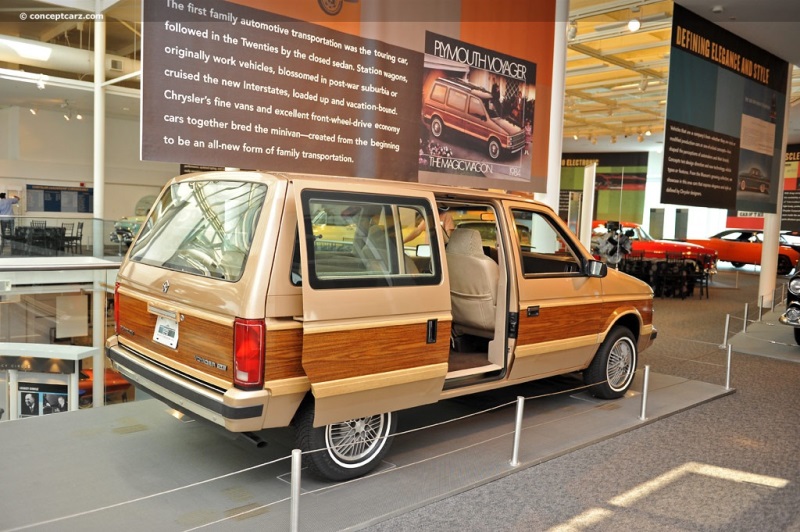
Recent Vehicle Additions

Performance and Specification Comparison
Price comparison, voyager specification comparison by year, related automotive news.
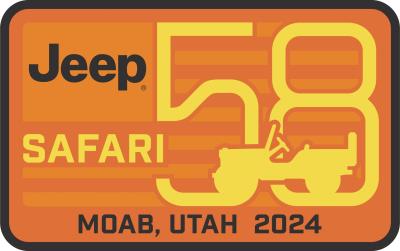
Four New Jeep® Brand and Jeep Performance Parts (JPP) by Mopar Concept 4x4s Hit the Trails at 58th Annual Easter Jeep Safari

CHRYSLER BRAND CELEBRATES 90 YEARS OF STYLE, ENGINEERING INNOVATION AND GROUNDBREAKING PRODUCTS
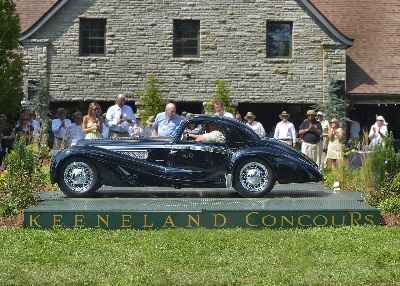
1937 Delage Takes Home Best Of Show At The 10Th Annual Keeneland Concours D'Elegance

Past Winners Come Up Big at the Eleventh Annual Hilton Head Island Motoring Festival & Concours d'Elegance
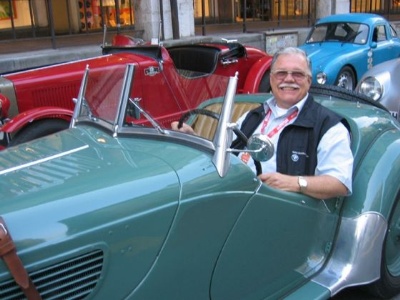
Paul Ianuario Named Chief Judge of 2013 Pinehurst Concours d'Elegance
Best plug-in hybrids in every segment
2025 toyota 4runner gets four cylinders, upgraded interior, hot wheels giving away exclusive nissan silvia at 2024 cias, suv review: 2024 toyota highlander hybrid, long-term test intro: 2024 toyota grand highlander hybrid max, looking back on the chrysler minivans that revolutionized the auto industry.
Built in Windsor, the Magic Wagon was so in more than just name
You can save this article by registering for free here . Or sign-in if you have an account.
Article content
Almost 40 years after their introduction, it’s still difficult to overstate the influence and impact that Chrysler’s twin minivans had on the automobile industry and marketplace. The two Windsor-built vehicles — the Plymouth Voyager and Dodge Caravan — were new in concept and appearance for the 1984 model year, but unlike other revolutionary vehicles from past, Voyager and Caravan quickly captured the public’s fancy.
Looking back on the Chrysler minivans that revolutionized the auto industry Back to video
Indeed, the impact these vehicles had on the marketplace was as profound as Ford’s Mustang, as almost every global automaker eventually introduced its own minivan.
The idea was hatched by one of Lee Iacocca’s lieutenants at the Ford Motor Company, Norm Krandall, who in the early 1970s calculated that a large market existed for a small, utility-type van with seating for up to four people and perhaps as many as six. Krandall’s research showed that as many as 800,000 units could be sold in a single year.
The numbers were presented to Iacocca, who thought the research had some merit. Even if only half as many of the small vans were sold in one year, those sales would represent a substantial volume for Ford and could quite possibly represent a hit, much like the Mustang.
Learn more about the cars
2024 chrysler pacifica.
MSRP $56,670 to $75,670
But Henry Ford II, whose relationship with Iacocca was strained, didn’t like the idea. As well, Ford and the other Detroit auto companies were facing myriad challenges, including rising fuel prices, as well as new federal emissions and safety standards. And so the Ford minivan concept was shelved.
Lee Iacocca was fired from Ford in mid-1978 but subsequently hired by the ailing Chrysler Corporation. Iacocca and his new Chrysler team (among them was Hal Sperlich, a former Ford designer who had also pushed for a small minivan) developed new compact cars, the Dodge Aries and Plymouth Reliant. They were equipped with front-wheel drive and four-cylinder engines. They were modest offerings, but the public snapped up the so-called K-cars, helping to push Chrysler into financial health.
In an effort to leverage the K-cars’ technology, Sperlich suggested that Iacocca’s team go back to the minivan idea developed while at Ford. The idea was to use the K-car platform.
What followed was pure automotive magic. The Caravan and Voyager were instant hits, as part of their appeal was the utility and space they offered. They had a lower profile, allowing them to be easily parked in a garage. That profile was possible because the minivans were front-wheel drive.
No other Detroit company could have then offered the same design because no other Detroit company had embraced front-wheel drive technology as fully as Chrysler.
Within a few years GM and Ford followed with their own minivans, but couldn’t match Chrysler’s overall utility because both GM and Ford were using rear-wheel-drive truck platforms, at least initially.
Chrysler further refined Caravan and Voyager (after adding a third line, the Chrysler Town and Country) with a redesign in 1990, then another in 1996, yet another in 2000, and then another, launched for 2008.
The current Chrysler minivan, Pacifica, was launched for the 2016 model year and although bristling with new technology and wonder, presents the same basic idea as the original minivan offered almost 40 years ago.
Chrysler’s minivans were built at its assembly plant in Windsor. The plant had previously been devoted to building Cordoba, but by the late 1970s Cordoba production had slowed. A new Imperial coupe was added to Windsor’s production in the early 1980s, but Imperial sales were never strong. Both were built until the 1983 model year, leaving an opening for a new Chrysler project.
News that the new minivans would be assembled at Windsor galvanized the city and the industry. Although there was a risk the minivans wouldn’t enjoy strong sales, there was enough hope that they would also be harbingers of Chrysler Corporation’s future.
The first Voyager rolled out of the Windsor plant on Nov. 2, 1983, and the response was immediate.
The new vans were unlike anything before offered by the Detroit companies and were therefore historic. The wheelbase was a modest 112 inches, yet the small package offered a large interior. Indeed, there was nearly twice as much cargo room when compared to a K-car station wagon.
But what sold most people was the minivans’ seating. A standard configuration provided for five passengers in two rows, but a third seat extended that capacity to as many as eight passengers.
There were several seating configurations available, and the possibilities enchanted more than a few prospective customers who recognized the advantages inherent to the minivans’ design.
Because the new Voyager and Caravan were based on the K-cars and their front-wheel drive platform, the minivans’ floor didn’t need to be raised to accommodate a transmission tunnel. And because the floor didn’t need to be raised, neither did the roof. And so the minivans were compact enough, and low enough, to be parked inside a conventional garage.
The minivans were not costly, and that was because they shared parts and mechanics with the Aries and Reliant K-cars.
But they didn’t share the chassis. The minivans’ K-car chassis was specifically adapted to include MacPherson trust front suspension and a beam rear axle with leaf springs. The minivans featured what Chrysler Corporation called its S-platform.
But the engines were taken directly from the K-cars. For the first three years of production, Voyager and Caravan offered two engines – a based 2.2-litre, four-cylinder engine that delivered a very modest 96 horsepower, and a higher performance fuel-injected version of the 2.2-litre engine. And optional 2.6-litre engine from Mitsubishi was available.
There were three trim levels. For the Voyager, they was an unnamed base model, the mid-level SE and the high-level LE. The LE was dressed in simulated woodgrain paneling – a direct challenge to the traditional American station wagon.
The Voyager and Caravan showed great imagination. Perhaps the most enduring was the introduction of cup holders, a feature now found on every vehicle built on the planet. And in those first years, a handy sliding storage bin was nestled beneath the front passenger seat.
Of course, rear entry to the minivans was available through a sliding door behind the front-seat passenger. In later years, Chrysler would provide dual sliding doors.
Sales were initially solid but not spectacular. For the 1984 model year, Chrysler sold 209,895 minivans, and for 1985 it sold 242,827. The next year, 1987, was better at 307,841, while sales for 1988 topped out at 422,418. For 1989, the last year of the first generation, sales were 404,519 units.
From the start, Dodge had better sales than its Plymouth counterpart, and that would continue until the Plymouth brand was shuttered at the turn of the century.
GM answered the minivan challenge with its Chevrolet Astro/GMC Safari. They were well-received and enjoyed strong sales. But they were not front-wheel drive vehicles and were based on a small truck.
Ford responded for 1986 with its Aerostar. Its design showed more imagination than the GM vans, but was also based on a truck platform using conventional rear-wheel drive.
Eventually, Detroit’s so-called minivan wars would push both GM and Ford to introduce new front-wheel minivans, while Chrysler continued to improve and refine the Voyager and Caravan, while adding a Chrysler luxury variant, the Town and Country, for the 1990 model year.
The minivan killed the American station wagon, which had been a fixture on North America highways since the 1950s. Station wagon sales slowly ebbed away until the car-based wagons became a rarity.
Full Screen is not supported on this browser version.
You may use a different browser or device to view this in full screen.
- Classic Packard rolls into lake during owner's photo shoot
- One-off 1967 Exemplar I show car highlighted bronze benefits
- A day in the life of a Hot Wheels designer
- Italian firm restomods '68 Mustang into 'STL1' off-roader
- Famous Canadian supercar collection being auctioned off
Postmedia is committed to maintaining a lively but civil forum for discussion. Please keep comments relevant and respectful. Comments may take up to an hour to appear on the site. You will receive an email if there is a reply to your comment, an update to a thread you follow or if a user you follow comments. Visit our Community Guidelines for more information.
Affordable EVs
Small trucks
Popular Crossover SUVs
Practical 3-row SUVs
Minivans for the whole family
Compact Cars
Luxury SUVs
Affordable AWD SUVs
All things automotive: breaking news, reviews and more. Wednesdays and Saturdays.
- There was an error, please provide a valid email address.
A welcome email is on its way. If you don't see it, please check your junk folder.
The next issue of Driving.ca's Blind-Spot Monitor will soon be in your inbox.
We encountered an issue signing you up. Please try again
Best pickup truck bed organizers, drawers and storage
Not all your cargo has to sit out in the rain – or in eyesight of thieves
10 tools and tips to help you survive winter on the road
From battery boosters and traction mats, to shoelaces and trail mix, here's what you should keep in your car throughout winter
Everything you need to know about bike racks for your vehicle
There are tonnes of bicycle-carrying options for Canadians who love two wheels as much as four
The 11 winter car accessories every driver is buying this season
From winter floor mats to cat litter, these might just help you prepare for the cold season
Best motorcycle riding gear for the season
When it comes to balancing comfort and protection, we have some recommendations for the best jackets, boots, and gloves
This website uses cookies to personalize your content (including ads), and allows us to analyze our traffic. Read more about cookies here . By continuing to use our site, you agree to our Terms of Service and Privacy Policy .
Edit your picks to remove vehicles if you want to add different ones.
You can only add up to 5 vehicles to your picks.
You've reached the 20 article limit.
You can manage saved articles in your account.
and save up to 100 articles!
Looks like you've reached your saved article limit!
You can manage your saved articles in your account and clicking the X located at the bottom right of the article.
- Classifieds
- Get The Email
Auctions Ending Soon

First-Year Game Changer: 1984 Plymouth Voyager LE
I’ve been around long enough to witness the introduction of two rather revolutionary car categories. And both spearheaded by Lee Iacocca. The first was the Ford Mustang, the original pony car, which came out in 1964 when I was nine years old. Twenty years later, I had just started a family and needed four doors and room for playpens and high chairs when Chrysler introduced the first ever garage-friendly, car-like driving minivan. Trust me, the Dodge Caravan and Plymouth Voyager twins were a transportation game changer if you had kids and needed cargo space. And consumers thought so, too. Chrysler couldn’t build their popular new minivan fast enough and over 209,000 found garages and driveways in their first year of sales. Most of these minivans were “rode hard and put away wet” as they say, but here’s a low-mileage 1984 Plymouth Voyager LE that is remarkably preserved. It is located in Huntington Beach, California and is for sale here on craigslist for $8,000. A special shout out to our pal, numskal, for sending this tip our way.

Plymouth marketed their new Voyager as “the family vehicle of the future…the Magic Wagon. You’ve got to drive it to believe it.” And although most minivan buyers were young parents with several kids, some grandparents found the practicality and flexibility of this new occasional grandkids hauler appealing as well. Nothing is shared about this Voyager’s history, but I’m guessing it belonged to “an older demographic” who bought the luxury LE level, always kept it garaged, well maintained, and wasn’t taking a gaggle of kids to soccer, football, or baseball practice several days a week. The exterior looks great for a nearly 40-year-old people/cargo hauler. The Beige Metallic paint is shiny and I’m not spotting any body and rust issues. The faux wood trim on the sides and tailgate looks very good as does the shiny stuff, trim, glass and lenses. I don’t believe the added-on running boards came from the factory.
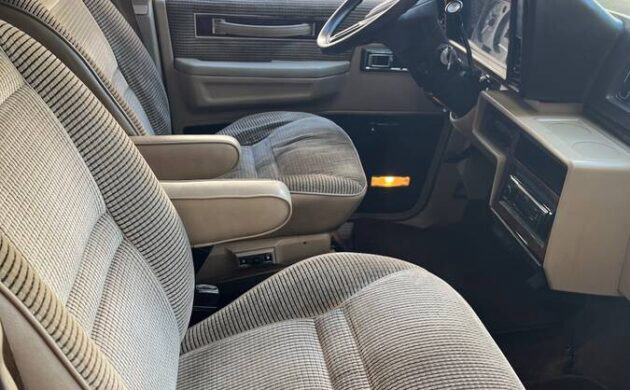
Inside, the well-preserved time capsule theme continues with the beige cloth interior looking to be in very good condition. The driver’s bucket seat has a little bit of wear in the form of stretched fabric and the rear bench seat (that when removed, offered 125 cubic feet of cargo space) hasn’t seen many fannies on it the past 40 years. The instrument panel, dash, and door panels look very good as well. The seller rates the interior a 9 out of 10, and it looks like it.
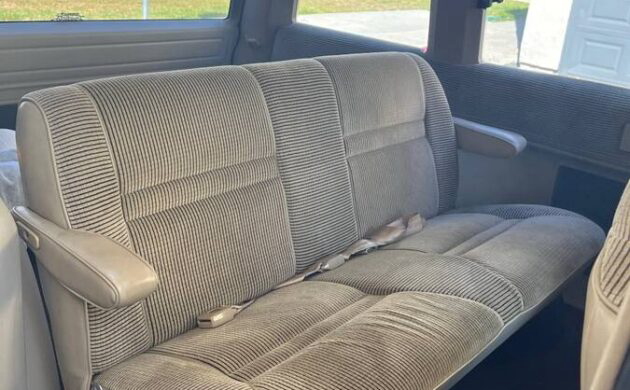
Chrysler’s new minivans were originally going to have four standard doors, but changed to dual sliding doors for easier parking lot access. But to reduce production costs and market the van for commercial use, a single left-side sliding door was offered on the ’84 Caravans and Voyagers. Other cost control measures included sharing the instrument panel, interior controls, and a number of trim items with Chrysler’s K cars.

The seller doesn’t include any photos of the Mitsubishi-sourced 2.6 liter 4-cylinder engine that is mated to a three-speed TorquFlite automatic transmission. It’s listed as having 84,700 miles on the clock with all service records having been kept since new. Mechanically, the Voyager has a new AC compressor and lines, a new battery, windshield washer pump, and blue tooth stereo. Under the “Newer” heading, the seller lists brakes, radiator, alternator, water pump, rack and pinion, headliner, and more. It also passed the California smog test less than 400 miles ago. It’s easy to poo-poo the uncoolness of the minivan 40 years after its introduction (which was seen at the time as a cool replacement for the uncool station wagon), but you can’t overlook its importance as a transportation game changer in the 1980’s. This one might be one of the nicest surviving first-year Plymouth Voyagers out there. Many didn’t look this nice and clean even when they were new!
Most of these turned to a pile of rust. This one is surprisingly nice. The bad thing about the minivan is it led to the demise of the station wagon and the rise of the “softened” SUV, which is bow resulting in the demise of the automobile.
I too had a 1984 Voyager. The Mitsu engine (optional) was bulletproof. Unfortunately my oldest daughter totalled it after 8 years and 100,000 miles.
We had one almost identical to this one, except that it was dark brown with the Chrysler 2.2. It could barely reach highway speeds, and there was no way it could maintain those speeds on even the slightest hill. What a piece of junk! Sold it after about 6 months
I had an ’86 used with about 1,000 miles on it. It came with the Mitsubishi 2.6 and automatic. It was the best car I had ever driven. Four kids, all our luggage, from Washington to LA and back, over the grapevine easily holding its own up the grades and across the blazing hot central valley with air conditioning running at 70+ and never a problem until the thermostat stuck a year later. When it overheated that ruined the wax-cylinder automatic choke which made it a little difficult to start on cold days after that, but I not been so stubborn and simply replace the thermostat, it would most likely still be running. Synthetic oil and changed it every time it got a little dark. I have had four Caravans and one Voyager since, all used. As I discovered later, the previous Voyager owner had destroyed the sliding door lock mechanism and door frame, but there was never a problem with any of them that was not attributable to negligence. The 3.8 was a particularly strong engine and economical, on long runs up I-5 it got 27 mpg.
I worked at Bob Caldwell Dodge here in Columbus OH where the 5 millionth minivan was sold, I believe it was 1996. The family that bought it was unaware that the van would be free to them and there would be a morning block party catered by McDonald’s and covered by CBS’s “Good Morning America”. I worked in the parts department and had to help set up the event at 5:00 AM. Of all things it was on my parents street where I grew up. Fun memory and I later owned one starting a young family a few years later. Only wish Lee Iacocoa was there so I could’ve met such a great American ! 5 million sold after 12 years is nothing to sneeze at…
Great American????
Yeah actually he was. I started working for Chrysler in ‘81. It all turned around when Lee came and took over after working at Ford.We wouldn’t have the suv of today without his knowledge of what the public needed. He turned the company around and made it profitable, and repaid the loan back to the government in short order.So yeah I think he’s a great American too.
I had an 88 with the 2.5 mopar 4. Bullet proof and decent acceleration. Was really a game changer as our family was growing. Car pools, road trips all in a comfortable and roomy space. I not too big and not too small.
The early ones likely suffered from all the emission controls retrofitted to carburetors, while the newer ones had a throttle body EFI which really improved drivability and reliability.
Lots of great memories
Say what you will, these vans rocked the world in the 80s. My girlfriends father had one just like this but in medium blue, we put a motorcycle in it (no mirrors), and he used it for work during the week and family hauling and long trips. It could swallow 12’ 2x12s and got really good mileage, all while hauling 1000 pounds of concrete. It is the only vehicle I have ever seen to get over 100k on brakes. It is a shame they became unpopular, SUVs are really no better looking and get much worse mileage.
Doesn’t say anything about headgasket. Had a 1987 a she smoked up a storm.people would tell my wife that her car was on fire.
I still have my 1999 Dodge Grand caravan sport. Bought it used in 2008 for $2250. It now has 305,000 miles. Never has it left me stranded, unlike my 2011 Toyota Sienna which has three times. Transmission service every two years. Never have had the transmission removed / replaced. Now it hauls concrete and everything else to the dump.
Solid vehicles that created a market segment. Lots of scrambling from others to get something like it. The Aerostar and Astro was aimed at a similar yet different client. Tough as tanks and not rust buckets until the all new 1995 model. Lots of people had them with 2.2s and stick shifts who really liked the car. Of coarse anything bigger was a step in the right direction, especially the 3-litre V6 and the 2.5 turbo. Chrysler’s own 60° V6 wouldn’t appear until I believe 1990.
When these first came out they were in such high demand that it pushed the price way higher than sticker price. In 1984 I had just started working at a bodyshop and a coworker was fixing a loaded one that was hammered very hard in the side. Most any other vehicle would have never been fixed but these were so valuable and so hard to come by at that time that it was fixed. Seems crazy today that so much effort would go into saving a Caravan.
I’m a Great grandparent and my Grandkids and Great Grandkids ride in our 2006 Caravan. We transport rescue dogs in it too. We LOVE it. As long as we can find another one that’s not a rust bucket, we’ll have one. Thanks Lee. This and the Mustang were great ideas. (We’ve owned a few Mustangs too)
My one and only mini van was a 93 Aerostar 4wd. Loved that thing, but it loved gas and head gaskets. A buddy bought a Caravan in ’87. Had the 2 kids by then, and the wife was complaining about his Mustang GT. He showed up at a bachelor party in the Dodge, and parked a block away. Too embarrassed to park in front of the house, I guess.
The write up says due to cost controls, the new minivan would only have a LEFT side sliding door. Apparently, the author can’t tell the difference of the right side or left side, as this van clearly has a RIGHT side sliding door.
I was thinking about that too at first but then realized that if youre looking at it from the front……. it IS on the left……. just a thought…..
In the automotive world, the view isn’t from the outside front, its from the driver’s seat. That is the standard. In the USA, what side of the street do you drive on? That would be the RIGHT… as in the view from the driver seat. You steer the car from the LEFT side of the automobile. When you order a front fender for a car, or any left or right part, it is always the view from the driver seat.
Thats a good point. You would order a right front fender ( passenger side) etc.
My dad bought a new Caravan in 1984, with a four on the floor! Fun to drive.
I would recommend to anyone, especially those not familiar with Lee Iacocca to read and/or watch a documentary about him. Not only was he responsible for the Mustang and Minivan, his story as a self made man of humble beginnings and his life achievements is impressive. If there were a ‘Mount Rushmore’ of the US auto industry, he would be carved in rock !
My brother had an 84 model in 1992 with a manual transmission, the only one I ever saw. We went from Tyler Texas to El Paso Texas and back in it. It stayed up with traffic just fine and had no problems on the near 2000 mile trip. The a/c had problems keeping the back area cooled so he mounted a fan to help out.
Postng deleted by author.
Leave A Comment Cancel reply
RULES: No profanity, politics, or personal attacks.
Become a member to add images to your comments.
Get new comment updates via email. Or subscribe without commenting.
Recent Finds
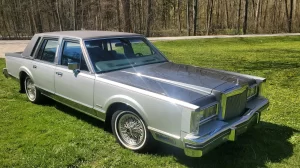
Clean Cartier Edition: 1985 Lincoln Town Car
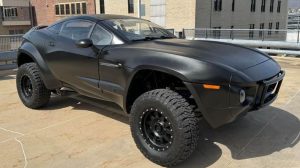
1-of-50: 2014 Local Motors Rally Fighter
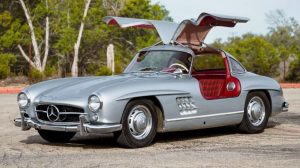
Long-Term Owner: 1956 Mercedes-Benz 300SL Gullwing
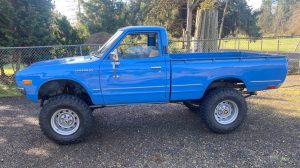
Dealer Modified: 1979 Datsun 620 4×4 Pickup

- Motorcycles
- Muscle Cars
- Our Projects
- Project Cars
- Success Stories
Get Daily Email Updates:

Don’t Miss Another Find!
Sign up for our free daily newsletter:
Unsubscribe anytime

Enjoying Barn Finds?
Sign up for our free daily email and you’ll never miss another find:
No thanks, I'm already subscribed.
- Cars Database
- Moto Database
- Game reviews
- Compare Cars
- BAC Calculator
- Testdrives archive
- Photo of the Day
- Glossary of automotive terms
PLYMOUTH VOYAGER Models/Series Timeline, Specifications & Photos
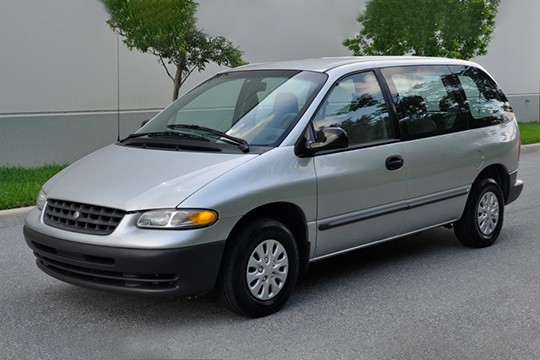
PLYMOUTH Voyager 1995 - 2000
The Voyager saga continued in 1995 with the introduction of the third generation, and the Plymouth was again the entry-level model for Chrysler's minivans.
Plymouth sold the third generation of the Voyager in two-wheelbase options for the Voyager and the Grand Voyager, respectively. Unlike its predecessors, which shared the same platform, the 1995 model was completely changed from tip to toe. The minivan was no longer a box on wheels but shaped according to the bio-design trend that was liked by customers. In addition, there were major improvements to the interior.
The 1995 Voyager showed a front fascia that sported rounded horizontal headlights with corner-mounted turn signals. The grille featured an egg-crate design with the brand's logo in the middle. One of the major improvements of this generation was the addition of a second sliding door on the driver's side, offered as an option. The long-wheelbase version featured an extended rear window behind the B-pillars. Finally, the back didn't look like a utility van anymore since the designers made it curved.
Inside, the MPV featured a car-like dashboard with rounded shapes. The seats were higher than in a regular sedan, but they ensured a comfortable ride. In the back, the Voyager was available with two rows of seats. Since it was built as a lower-priced model, it wasn't available with standard AC until 1999, when this was introduced on the SE trim level and up. The interior room was big enough to carry a 4x8 (1.2 x 2.4 m) plywood with the second and third bench seat rows removed. Also, the interior features list was long and comprised comfort and safety features.
Like its siblings, the Voyager was available with a choice of four engines, depending on the market. They ranged between 2.4 and 3.8-liter displacement. The latter was discontinued in 1999. In 2000 the model was axed altogether with the Plymouth brand.
PLYMOUTH Voyager 2.4i 16V 3AT FWD (154 HP)
PLYMOUTH Voyager 3.0L V6 SE 3AT FWD (154 HP)
PLYMOUTH Voyager 3.3i V6 4AT FWD (162 HP)
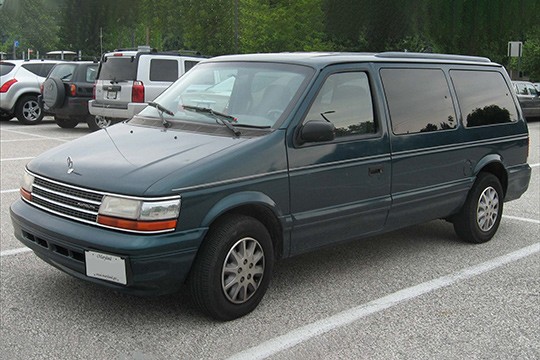
PLYMOUTH Voyager 1990 - 1995
Plymouth introduced the second generation of the Voyager in 1990 for the 1991 model-year and built it on the same platform as its predecessor, albeit enhanced.
During the late '80s, minivans ran the high tides thanks to their ability to carry people, perform duties suitable for a light commercial vehicle, and save money for renting a U-haul van when taking kids to college. Nevertheless, these people-movers could get three families of two and some luggage aboard. Their practicality was so good that they could withstand the assault of the rising SUV segment.
When it made its minivans family, the American automaker stretched and adapted the K-platform used on the LeBaron/Acclaim/Spirit cars. As expected, the Plymouth version was positioned between the more luxurious Chrysler and the sporty Dodge. Even though it was a badge-engineered product, it still sported some brand-specific details, such as the horizontal slats on the grille and the rectangular headlights. Unlike its predecessor, it featured shaved edges and corners, trying to look more appealing to those looking for rounded shapes.
Inside, the automaker offered a wide cabin with two seats at the front and up to six on the following two rows of seats. For the entry-level, the Voyager featured a floor-mounted gear stick, but the more upscale versions were fitted with automatic gearboxes. Still, there was enough room for front occupants to move around and pass through the cabin if needed. On the middle row, Plymouth installed either a set of captain seats or a bench with one folding chair to ease access to the rearmost row of seats.
Since it shared its platform with the Acclaim, the base version was powered by the same 2.5-liter inline-four. At the other end of the scale, Plymouth installed a 3.3-liter V6 paired with a four-speed automatic. Starting with the 1994 model-year, the automaker replaced this powerplant with a more powerful 3.8-liter mill.
PLYMOUTH Voyager 2.5L AWD (101 HP)
PLYMOUTH Voyager 3.0i V6 3AT FWD ((144 HP)
PLYMOUTH Voyager 3.3i V6 4AT FWD (165 HP)
PLYMOUTH Voyager 3.3i V6 SE 4AT AWD (152 HP)
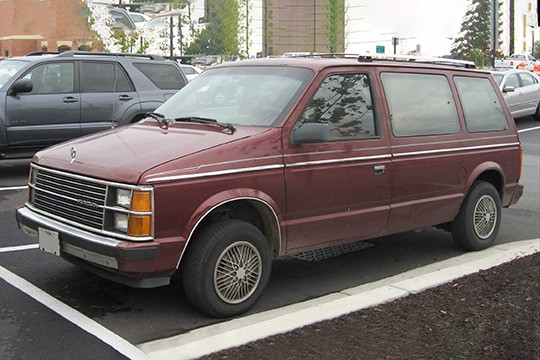
PLYMOUTH Voyager 1984 - 1990
Chrysler introduced its minivans lineup in 1984 as an alternative to family minivans, and the Plymouth Voyager was among the first to arrive on the market.
While regular vans didn't fit in regular garages, Chrysler came up with a better idea when it made the T-wagons. With their height shorter than a person and a footprint about the size of a regular compact station wagon, these MPVs conquered the market.
With its boxy look, the Voyager has fitted into the car's design trend from the mid-80s. Its front fascia featured a pair of rectangular headlights on each side of the vehicle and a broad flat grille between them that sported chromed horizontal slats. The chromed bumper with plastic caps on each end looked normal for those days. On the passenger side, the Voyager was fitted with a front-hinged door at the front and a sliding one in the middle for the rest of the cabin's occupants. The back of the minivan was fitted with a large tailgate that opened upwards.
But the interior was the one that mattered most. Since the Voyager was built on a unibody platform that featured a front-wheel drive system, the floor's height was low. Thus, passengers could get in and out more easily than on regular, body-on-frame-based vans. At the front, the stylish but boxy-looking dashboard followed the car's overall shape, and two bucket seats were provided for the front occupants. The middle row was suitable for two adults, while the rearmost row could accommodate three people. In the five-seat configuration, the middle row was redesigned for three passengers. The owners could fold or remove all the seats apart from the front ones to create a vast interior.
Plymouth installed a few engine options for the Voyager, starting with a 2.2-liter inline-four paired with a five-speed manual or a three-speed automatic. Still, for those willing to hear a six-cylinder mill under the hood, the automaker offered a 3.0-liter V6 carried over from Mitsubishi.
PLYMOUTH Voyager 2.2L 3AT FWD (97 HP)
PLYMOUTH Voyager 2.5L FWD (101 HP)
PLYMOUTH Voyager 3.0L V6 FWD (138 HP)
Here's What We Love About The 1984 Chrysler Minivan
It’s been 37 years since the paradigm-shifting Chrysler minivan which was known as the Plymouth Voyager and the Dodge Caravan was unveiled.
It's been 37 years since the paradigm-shifting Chrysler minivan, known as the Plymouth Voyager and the Dodge Caravan, was unveiled.
The Chrysler minivan, an attempt by Chrysler to blend a Station Wagon and a conventional Van on a single wheel, was introduced in late 1973 as the 1974 model, and Chrysler was able to pull it off in flying colors. The minivan, known as the Dodge Caravan, and the Plymouth Voyager became hot cakes immediately.
Chrysler started sending them to dealers in late 1983, and the vehicle officially became available to the public in early January, with people scrambling to become proud owners of one. According to Autoblog , 209,000 units of the small van were sold in the debut year. The success of Chrysler's minivan soon inspired other automakers to join the segment to have their piece of the market.
According to NYTimes , Jack Helfman, the owner of River Oaks Chrysler Plymouth in Houston, expressed his frustration in February 1984 about how he had only delivered 20 of the van so far.
There are orders for about 80 already, which may take him months to clear off because the level of production couldn't match the demands for the minivan, even with the workers of the Windsor Ontario Plant, which was the only factory that built the van working double shift.
RELATED: 2021 Toyota Sienna Vs 2021 Chrysler Pacifica: Which Minivan Comes Out On Top?
The 1984 Chrysler Minivan
Before Chrysler entered the minivan segment, they made full vans, which were pretty popular in the 1970s. Chrysler, wanting to make more options available and inspired by the success of their full vans, initiated the development of smaller vans.
Chrysler found themselves in a dire financial crisis by the end of the '70s, which slowed down their small van project, but they managed to push it through, releasing the van in late 1973 as the 1974 model Chrysler minivan. Dodge Caravan and the Plymouth Voyager became a revelation, and the success of this minivan helped Chrysler financially. The Chrysler minivans sport a front-wheel-drive with the engine in the front sitting on a compact chassis and interiors filled with many innovative ideas.
Space Was Not A Problem With The 1984 Chrysler Minivan
The Chrysler Minivan took the shine off all available station wagons in interior space and was not too big to be a sweetheart for soccer moms. The Chrysler Minivan can accommodate seven adults comfortably, with enough space for each to twist and turn. On days you have to move cargoes from one location to another, no qualms, you have a worthy companion in the Chrysler minivan. Without much hassle, you can convert your minivan for cargo hauling duties. The multi-dimensionality of the minivan made it a serious preference for small businesses.
Occupant's Safety Was Paramount
Unlike the Volkswagen minivan, which has been around since the 60s, and the Toyota Van introduced a year before the Chrysler Minivan, Chrysler seriously considered safety while building the minivan. Chrysler took cognizance of people's qualms concerning the position of the engines of most of the minivans on the market, which are placed in the rear.
People were particularly alarmed by the conspicuously short nose of the Toyota Van, which offers weak protection in case of an accident or a head-on collision. Chrysler considered all this and placed their engine in front of the car; to offer added protection to its occupants, especially the driver, in case of a crash.
Utility, Versatality, And Comfort In One Van
The Chrysler minivan was a perfect balance of the station wagon and the conventional van. According to NYTimes, the little van is 16 inches lower than Chrysler's standard van, 10 inches narrower, and 21 inches shorter, so it can be parked in garages where conventional vans wouldn't dare and tight spaces that can take a station wagon.
The Federal Environmental Protection Agency, in its rating, estimated that the van would travel 24 mpg in the city and 37 mpg on the highway driving, and due to its front-wheel-drive platform, the minivan is easy to drive even on rugged terrains and under challenging conditions thanks to the small van being a front-wheel drive.
Chrysler's reign as the number one minivan producer was a highly successful one, and their minivans, most especially the 1984 model, continued to win and remained a classic among minivan lovers. According to Business Insider, by 2000, which was the year the sales of minivans peaked, Chrysler had sold around 1.4 million minivans. Chrysler's minivan sales were over 54 percent of all the minivan sales in the United States in 2019, and the Dodge Grand Caravan was the best-selling U.S. minivan.
Just like minivans took the shine off station wagons, SUVs and Crossovers started winning people over in the early 2000s, and minivans started losing market and public interest. According to MotorBiscuit , the Plymouth Voyager was discontinued in 2007, but its bigger cousin, the Dodge Grand Caravan, persevered until the chapter was finally closed on its glorious reign in May 2020.
- En Español
- En Français
- Media Contacts
FORGOT PASSWORD
Your account is archived, your application is pending.
Journalists must be registered with the site to receive email alerts and to download high-resolution photos.
Don't have an account? Click here to register
- I forgot my password
25 Years of Chrysler Minivans—a Timeline of Innovations
Contact information.
By using this website, you consent to our use of cookies as described in our privacy policy and terms of service .
All photography and images on this site are for editorial use only by accredited journalists. The use of these materials for advertising, marketing or any other commercial or personal use is prohibited. They may be cropped but not otherwise modified. To download these materials, you must agree to abide by these terms.
- Account Settings
Top stories

- Curbside Classics
Curbside Classic: 1984 Dodge Caravan

There’s nothing truly original in the car business. Everyone begs, steals and borrows from everyone else. Or sometimes, the same (and usually obvious) idea ferments for years in various heads or companies, and then suddenly appears in the same format at the same time in totally different places. How about the modern FWD mini-van? It first bubbled up in two totally different branches of Chrysler, sat for years,and then suddenly sprang forth, one in the US, the other in France, both at the same time. Coincidence, or is it just that every idea has its day in the sun? For the minivan, that would be 1983. In France, it was the Espace; in the US it was the Dodge Caravan/Plymouth Voyager.
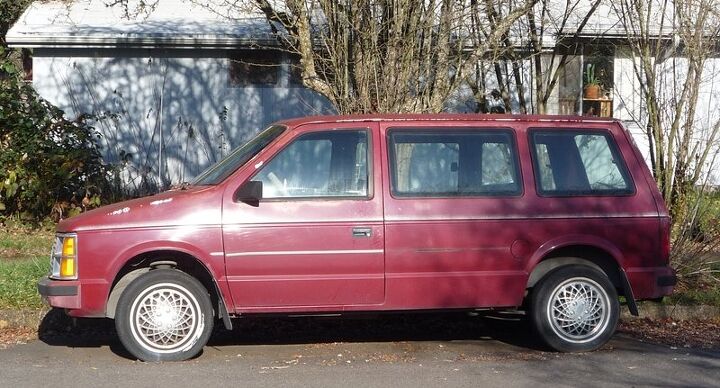
We’ll touch on the Renault Espace again later, whose history is convoluted but less contested historically than the Chrysler minivans. Lee Iaccoca and Hal Sperlich, who left Ford in for Chrysler in 1978, will tell you that they conceived of a “Minimax” project at Ford in the seventies and pitched it to Hank II, who turned them down. Chrysler historians have plenty of evidence that they were at work on a similar project during the early seventies, a “garageable van”. Both concepts initially were based on RWD chassis, there being no suitable FWD platforms in those days of yore. Realistically, they were more like a cross between traditional wagons and the large vans of the time. Probably both were true, and very likely someone at GM had the thought too.
Hal Sperlich was particularly enthusiastic of the concept; whether it was from his ideas at Ford or what he saw at Chrysler is unknown. But in 1978, development began in earnest, and customer input dictated the program: room enough between the rear wheels for a 4×8 sheet of plywood, removable and flexible seating for up to seven, a sliding door, bucket front seats to allow Mommy to attend to the bawling kids in the back. Now the idea needed a donor platform.

By this time, FWD was deemed essential, as early prototypes with slant sixes and RWD intruded too heavily in the passenger compartment. Chrysler’s Simca-based Horizon/Omni offered the first opportunity, but Sperlich wisely decided to hold off until the larger K-car platform came along a couple of years later. Additional delays because of competing demands and Sperlich’s desire to get it right the first time delayed the final product until the fall of 1983, when it was introduced to a highly receptive market.
The timing was excellent: the second energy crisis was still just winding down, so efficiency was still big on everyone’s mind. With only four cylinder engines, and a body shorter than the K-car sedans, the Chrysler T-115 vans had that covered pretty well. And the baby boomers were hitting the reproductive phase of life, and were more than willing to try something different than ye olde Country Squire that they had thrown up in. The minivans were born under an auspicious sign.

Before we get into the guts of the so-called Magic Vans, lets quickly pick up the story of that other 1984 mini-van pioneer, the Espace, because it also got its start under Chrysler’s roof, but in England. Europe UK (formerly Rootes) designer Fergus Pollock, who later was senior design manager at Jaguar, developed a van project in the seventies, about the same time as Giorgetto Giugiario’s highly influential 1978 Megagamma concept for Lancia.

Pollock’s design focused on the one-box approach, whereas the Megagamma retained the vestigial hood that the Caravan also appeared with. Of course one can likely find numerous earlier designs, even production ones, that will be thrown at this argument, but the Megagamma’s FWD layout, package and lines are unmistakably apparent in the Voyager/Caravan, and to some extent in the Espace. Lets not forget the line at the top of this article. And let’s also not forget that the Megagamma’s first offshoot saw the light of day in the 1981, as the Nissan’s Prairie/Stanza Wagon , one of our first Curbside Classics. That predates both of the “pioneering” minivans by at least three years.

To wrap up the Espace story, Chrysler sold its European ops to Peugeot in 1978, and the Espace was going to be a Talbot, which is what Simcas were rebadged as under their new owner. Matra was doing the lead work on its development, and when Peugeot chickened out, Matra took the project to Renault, who bit. But the first gen Espace still was full of Chrysler/Talbot parts. You will be tested on this tomorrow.
Enough of the fuzzy early history of the Chrysler bobsy-twins. What actually and finally appeared in the dealers on January 1984 was a remarkably innovative car, for conservative America. The first few years of production were strictly the short-wheelbase versions, whose seven passenger seating was a bit iffy all the way around. And lest I forget, there was an eight passenger version, with a bench seat(!) in the front. Try finding one of those now; it’s getting iffier just to find the early versions at all.

The one I found here is a five passenger version, which was not just a seven-passenger without one row of seats. The back seat was full-width, and was further back than the middle seat of the Mormon-family version. I seem to remember that the front bench also came with this setup, creating a rather traditional six-passenger arrangement straight out of the old days. In any case, the five seater had a very decent rear cargo area; the seven had next to nothing. It was a painful compromise, along with painfully short legroom that led to the much happier long-wheelbase Grand versions in 1987.

Power? What power? These early vans were rather pathetically lacking in that respect, with the standard 2.2 Chrysler four belching out all of 84 hp, while the optional “Silent Shaft” 2.6 liter Mitsubishi four had some 104 hp, more or less, depending on the exact year. A floor-mounted stick was fairly rare, but this one has it, and was preferable for a bit of zest compared to the three-speed Torque-Flite three-speed transaxle. At least it was reliable, unlike it’s self destructing but smother-shifting A-604 Utra-Masochistamatic that darkened our skies beginning in 1989.
The little vans that could were a runaway hit for Chrysler, and not just at the beginning. They were still selling at or close to list price into the early nineties, as I know from personal experience, having written a check for $22k in 1992 for a mid-line Grand Caravan. That’s solidly over $33k in today’s money. Live and learn. And for Chrysler, it was build and earn; by the billions (of dollars). The mini-vans were the cash cows that made Chrysler into the highly profitable company it once was.

It didn’t hurt that both GM and Ford bungled their mini-van competition royally, to the point they finally threw in their towels. That alone is one of the stranger stories in recent automotive history. It took Honda and Toyota to take on the Caravan/Voyager, and finally destroy Chrysler’s hegemony of the market. Who could have seen that in 1984?
The long-wheelbase versions were a big improvement, and eventually the short version went bye-bye, replaced today by vehicles such as the Kia Rondo and Mazda 5. Along with the extra length, Chrysler finally threw in a V6 engine, even if it was Mitsubishi’s. It took several years more before Chrysler’s rugged 3.3 V6 appeared, and in the meantime, it resorted to some creative moves to satisfy the now power-hungry Mommies. Since Mitsubishi could only deliver so many V6s, Chrysler drafted the turbo 2.2 four for mini-van duty, a rather unlikely combination. And contrary to those that claim otherwise, the turbo found its way into the Grand versions too, as some friends unfortunately had one. With its turbo-canyon and no low-end torque, it was an improvised stop gap that desperate buyers were willing to stomach, if only briefly.

A world without Chrysler minivans is hard to imagine now. They just HAD to happen, as did videotape, the internet, and ipods. And in each of those cases, their inventing weren’t exactly as simple as Sony, Al Gore and Apple. But in these times of fuzzy history and denial of evolution, Chrysler duly deserves to join them as the inventor of the mini-van. Amen.

More by Paul Niedermeyer
Join the conversation
My 1995 Voyager SWB 3 Litre V6 without Over Drive must have been built on a Wedenesday. Been pretty good besides the typical AC, Tranny, and radio issues. My parents wanted a stick shift, but by August 1995 the only new ones were slush boxes. Kind of funny you paid $22K for one since my folks only paid $18K, but that was probably due to the fact the 1996s were coming in and the 1995s were not cool. Almost 16.5 years old and almost 160K miles.
Just wanted to mention that I still have my 1984 Voyager and am keeping it in great condition. It looks like the picture on the Chrysler museum web site.
Latest Car Reviews

Drive Notes: 2024 Ford Maverick Hybrid XLT

2024 Hyundai Elantra N Review – Tightening Up

2025 Hyundai Ioniq 5 N Review – Shockingly Spicy

Drive Notes: 2024 Kia Telluride SX-Prestige X-Line

Drive Notes: 2024 Nissan Versa SR

Drive Notes: 2024 BMW i5 M60 xDrive

Drive Notes: 2023 Ford F-150 Tremor
Latest product reviews.

Best Amazon Prime Day Deals for TTAC Readers

TTAC Video of the Week: Looking Back on NASCAR Invading LeMans

Here’s How To Get the Best Deal on Winter Tires Right Now

Best Power Inverters for Your Car: Plugging Away

Best Sunshades for the Car: Where the Sun Don't Shine
Recent comments.
- Lou_BC Blows me away that the cars pictured are just 2 door vehicles. How much space do you need to fully open them?
- Daniel J Isn't this sort of a bait and switch? I mean, many of these auto plants went to the south due to the lack of unions. I'd also be curious as how, at least in my own state, unions would work since the state is a right to work state, meaning employees can still work without being apart of the union.
- EBFlex No they shouldn’t. It would be signing their death warrant. The UAW is steadfast in moving as much production out of this country as possible
- Groza George The South is one of the few places in the U.S. where we still build cars. Unionizing Southern factories will speed up the move to Mexico.
- FreedMike I'd say that question is up to the southern auto workers. If I were in their shoes, I probably wouldn't if the wages/benefits were at at some kind of parity with unionized shops. But let's be clear here: the only thing keeping those wages/benefits at par IS the threat of unionization.
You may also be interested in

Used Car of the Day: 1987 Nissan 200SX SE

QOTD: Ready for the Next Toyota 4Runner?
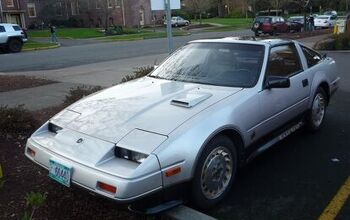
Curbside Classic: 1984 Nissan 300ZX Turbo

Curbside Classic: 1984 Toyota Celica Supra Mk II
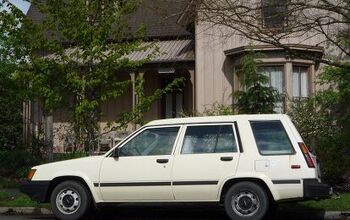
Curbside Classic: 1984 Toyota Tercel Wagon
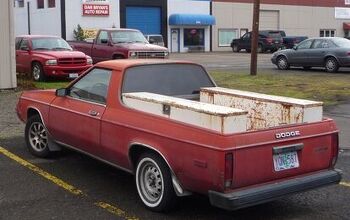
Curbside Classic: 1982 Dodge Rampage

Curbside Classic: 1983 Dodge Aries (Original K-Car)
Rare Rides Icons: The Cadillac Eldorado, Distinctly Luxurious (Part XVII)
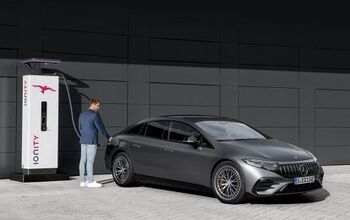
Report: Mercedes Having Tough Time Selling EVs

Samsung Partners with Tesla and Hyundai for Deeper Home Connectivity

Used Car of the Day: 2004 Land Rover Discovery
Rare Rides Icons: The Cadillac Eldorado, Distinctly Luxurious (Part XIX)

The NTSB Wants More Speed-Limiting Tech in New Vehicles

Gallery: Honda at the 2024 Consumer Electronics Show

Buick Prices Envision from $37,295

Study: Johns Hopkins Says Shrinking Streets Could Improve Safety

Diving Deeper Into the 2024 Hyundai Santa Fe
Car reviews by make.
- Mercedes-Benz
Additional Information
- Show Other Languages
1984-1990 Chrysler Voyager Repair
1984–1990 models sold in Europe were Dodge Caravans rebranded as Chryslers. In America, Caravan was sold alongside a similar Plymouth Voyager counterpart.
Popular Forum Questions
There are no questions. Be the first to ask a question!
This category covers 1984, 1985, 1986, 1987, 1988, 1989, 1990 Chrysler Voyager models.
- Wikipedia: Chrysler Voyager (1st Gen)
with 1 other contributor

Blake Klein
Member since: 01/29/17
70,510 Reputation
50 Guides authored
+40 more badges
Past 24 Hours: 0
Past 7 Days: 0
Past 30 Days: 3
All Time: 478
- Bahasa Indonesia
- Slovenščina
- Science & Tech
- Russian Kitchen

IMAGES
VIDEO
COMMENTS
Plymouth Voyager is a nameplate for a range of vans that were marketed by the Plymouth division of Chrysler.From 1974 until 1983, the Voyager was a full-size van, sold as the counterpart of Dodge Sportsman (later the Dodge Ram Wagon). Starting with the 1984 model year, the Voyager was marketed as one of the new Chrysler minivan, along with the Dodge Caravan.
The Caravan was first introduced as a North American minivan for the United States and Canadian markets, sold along with the identical Plymouth Voyager, in November 1983, for the 1984 model year. Interior trim, controls, and instrumentation were borrowed from the Chrysler K platform, and coupled with the lower floor enabled by the front-wheel-drive, the Caravan featured car-like ease of entry.
The old one is Magic Wagon No. 1, the actual preproduction 1984 Plymouth Voyager that Chrysler's then CEO, Lee Iacocca, used at press unveilings, dealer meetings, and general cheerleading ...
Hailed as revolutionary by virtually every news outlet upon its introduction in late 1983, the Plymouth Voyager and Dodge Caravan disrupted the automotive in...
Chrysler introduced its minivans lineup in 1984 as an alternative to family minivans, and the Plymouth Voyager was among the first to arrive on the market. ... PLYMOUTH Voyager 1984, 1985, 1986 ...
by David Zatz. Launched in 1983, the 1984 Dodge Caravan and Plymouth Voyager were the result of over a decade of work. The minivans had been rejected at least once, and even after they were approved, were put on hold — in favor of the Y-body Imperial. The idea had risen back when Chrysler had a 45% market share in full-sized vans, thanks to ...
The original Plymouth Voyager was a twin of the Dodge B-series van from 1974 to 1983. Beginning in 1984 the Voyager name was applied to a new vehicle based on the Plymouth Reliant car. It was first introdouced as a "magic wagon", meaning that is was very similar to a station wagon, however it had more cargo room and removeable seats.The Voyager minivan, along with the similar Dodge Caravan ...
Then, in 1984, one of those new mini-van models with Plymouth's nameplate came to be called the Voyager. Chrysler's new mini-van offered a number of improvements for customers. The platform used for the Voyager was Chrysler's S platform that had been derived from the K-platform used on the Plymouth Reliant and Dodge Aries.
The 1984 Chrysler Voyager was a minivan designed and produced by Chrysler. It was the first of its kind and helped to popularize the minivan segment. The Voyager had a front-wheel-drive layout and was powered by a 2.2-liter four-cylinder engine. Advantages: The Chrysler Voyager was the first minivan ever produced and helped to popularize the ...
1984 Plymouth Voyager Photo by Chrysler. Chrysler's minivans were built at its assembly plant in Windsor. The plant had previously been devoted to building Cordoba, but by the late 1970s Cordoba ...
Chrysler couldn't build their popular new minivan fast enough and over 209,000 found garages and driveways in their first year of sales. Most of these minivans were "rode hard and put away wet" as they say, but here's a low-mileage 1984 Plymouth Voyager LE that is remarkably preserved. It is located in Huntington Beach, California and ...
PLYMOUTH Voyager 1984 - 1990. Chrysler introduced its minivans lineup in 1984 as an alternative to family minivans, and the Plymouth Voyager was among the first to arrive on the market.
The 1984 Chrysler Minivan via momentcar.com. Before Chrysler entered the minivan segment, they made full vans, which were pretty popular in the 1970s. Chrysler, wanting to make more options available and inspired by the success of their full vans, initiated the development of smaller vans. ... the Plymouth Voyager was discontinued in 2007, but ...
The first-generation Chrysler minivans were released in November 1983 as 1984 models. The Dodge Caravan was an all-new nameplate, with the Plymouth Voyager adopted from its previous full-size van line. The model lines were built on the front-wheel drive Chrysler S platform.To streamline production and development costs, while the S platform was a distinct design, it shared powertrain ...
1984 Plymouth Voyager FCA 1984 Plymouth Voyager HVA. 1984 Dodge Caravan FCA. Production began at Chrysler's plant in Windsor, Ontario, in October 1983, and the first Voyager rolled off the line on November 2, with Iacocca at the wheel. Chrysler sold 210,000 that first year and soon added production in St. Louis, with three shifts running at ...
1983-1984 First minivan introduced to the market (the "T-115" first front-wheel-drive small van) November 2, 1983, Chrysler Chairman Lee A. Iacocca marks the production of the first minivan at Windsor Assembly Plant in Ontario, Canada ... Chrysler Voyager gains extra appeal for European buyers with an economical turbo-diesel version sold ...
It took Honda and Toyota to take on the Caravan/Voyager, and finally destroy Chrysler's hegemony of the market. Who could have seen that in 1984? The long-wheelbase versions were a big improvement, and eventually the short version went bye-bye, replaced today by vehicles such as the Kia Rondo and Mazda 5.
The first Voyager made its debut for the 1974 model year as a full-size Plymouth van. The first Plymouth Voyager minivan was introduced for 1984 and was based on the revolutionary Dodge Caravan ...
1984-1990 Chrysler Voyager Repair . 1984-1990 models sold in Europe were Dodge Caravans rebranded as Chryslers. In America, Caravan was sold alongside a similar Plymouth Voyager counterpart. Author: Blake Klein (and one other contributor) Create a Guide. I Have This . Support Questions Ask a Question ...
The experiment proved a success: the Russian tea plantations yielded their first crops in the early 20th century, although the quality of the local tea blends left much to be desired.
Weather Spark. Map. Compare
Weather Spark. Map. Compare
о395ру193 Chrysler Voyager (Krasnodar Krai) License plate Russia Cars